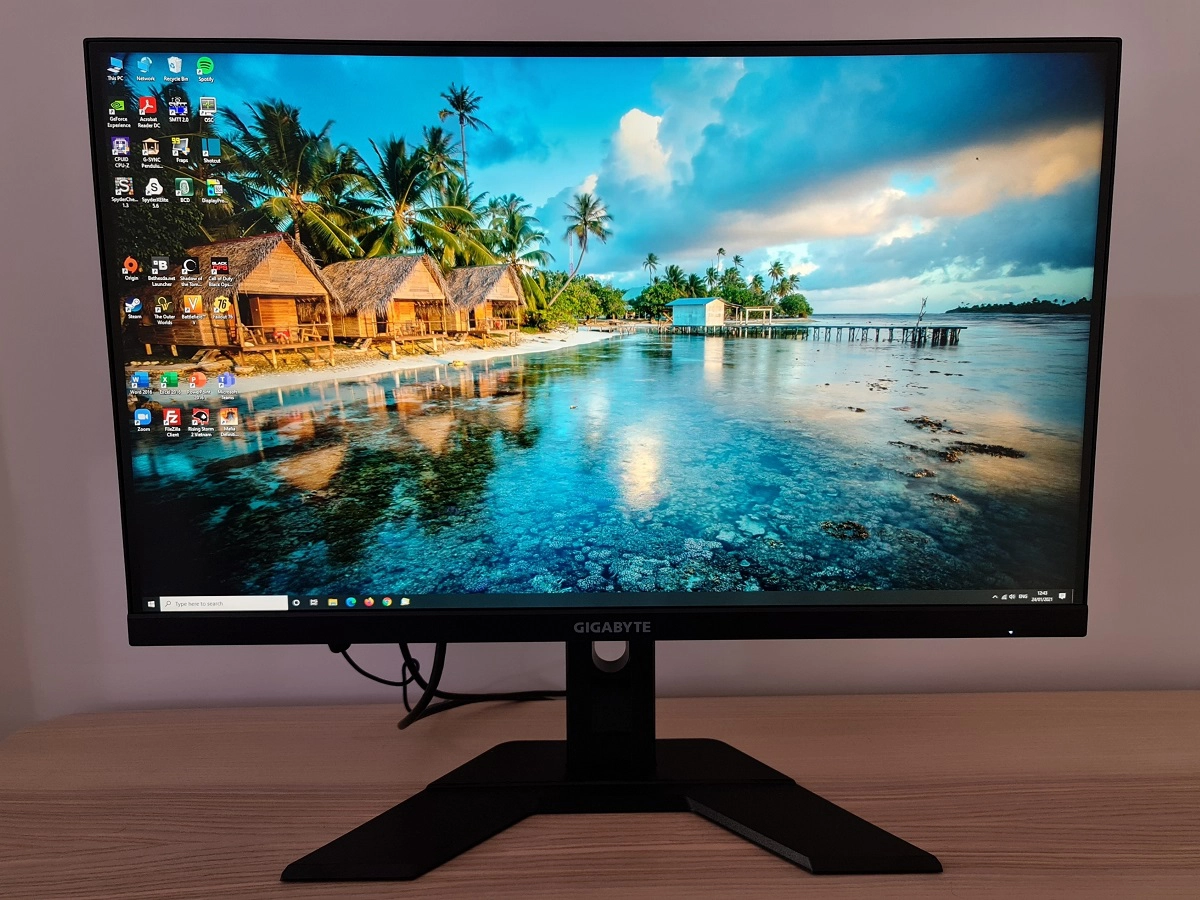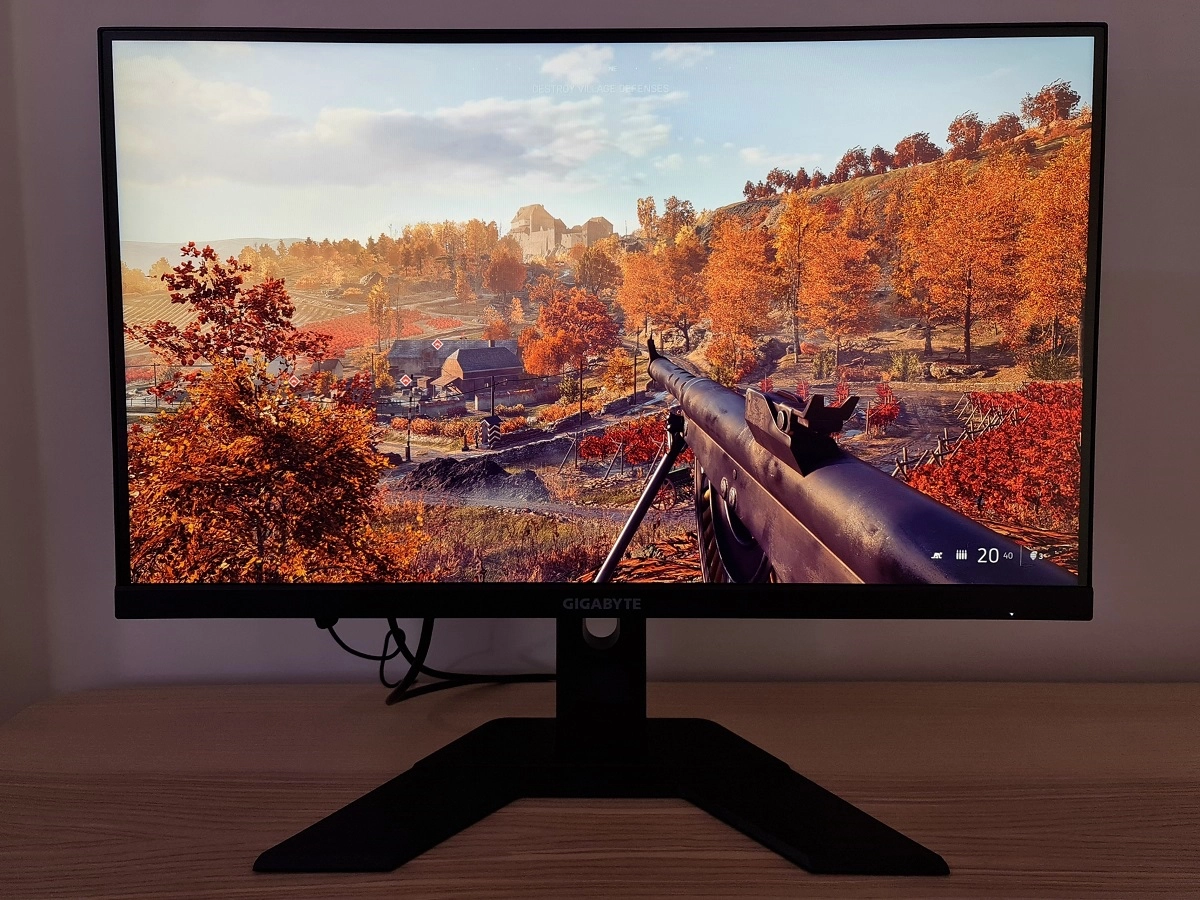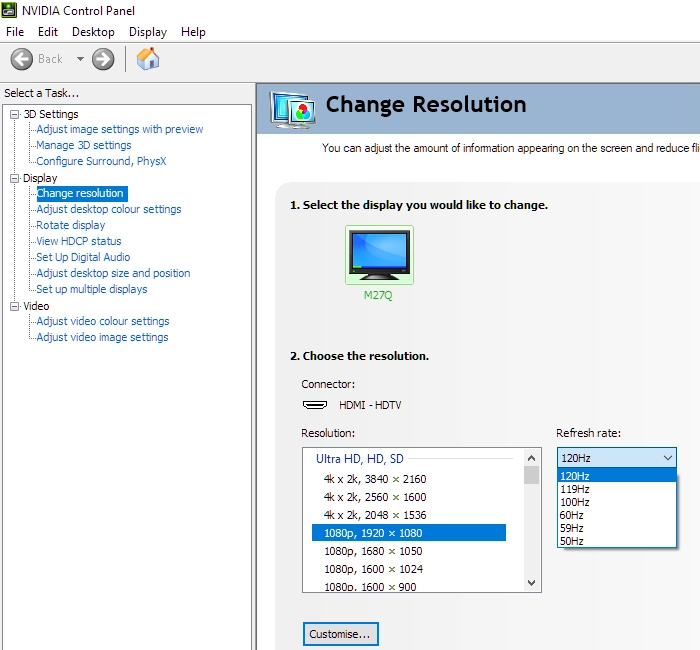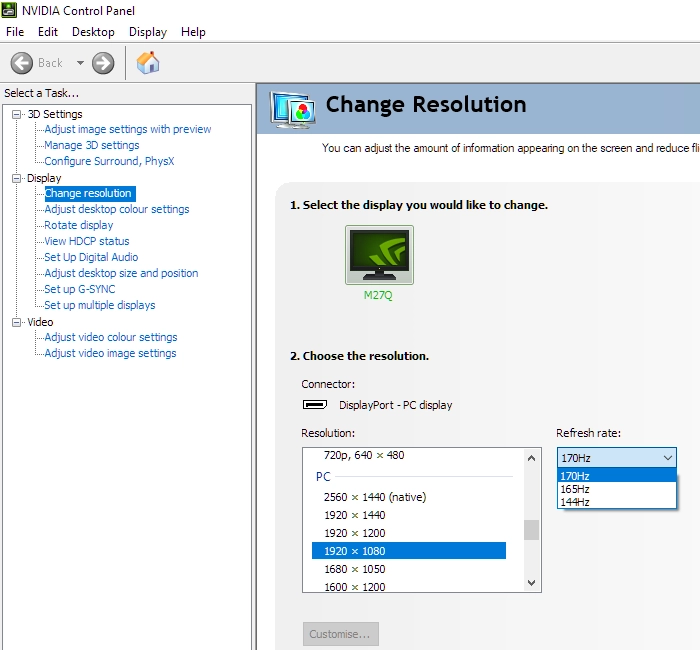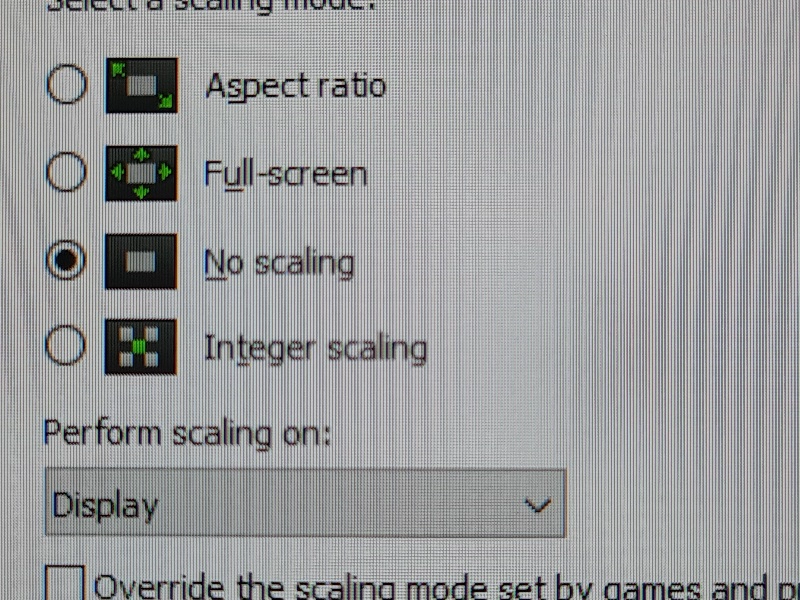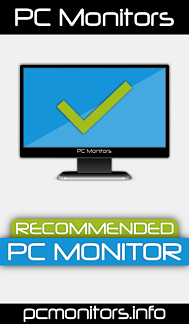Author: Adam Simmons
Date published: January 27th 2021
Table of Contents
Introduction
The high resolution 27” 2560 x 1440 monitor space is certainly crowded, with this hitting the sweet spot for many users in terms of screen size, pixel density and performance potential. The Gigabyte M27Q is an offering with this combination in mind, more budget-oriented than their AORUS models. But retaining a range of attractive features such as Adaptive-Sync support including AMD FreeSync Premium. With its IPS-type panel, there’s also a focus on strong colour performance. We put this model to the test with our usual suite, including desktop, movie and game testing.
Specifications
The monitor uses a 27” IPS (In-Plane Switching) type panel from Sharp*, marking a noteworthy departure from the more commonly used panels from the likes of LG Display, Innolux and AUO. The monitor supports true 8-bit colour and offers a 170Hz refresh rate plus 2560 x 1440 (WQHD) resolution. A 0.5ms MPRT (Moving Picture Response Time) is specified using the included strobe backlight setting. As usual, though, don’t pay much attention to these specified response times. Some of the key ‘talking points’ for this monitor have been highlighted in blue below, for your reading convenience.
*The ‘Rev 1.0’ model reviewed here uses a Sharp panel. A ‘Rev 2.0’ variant is also available, based on a different panel (Innolux M270KCJ-Q7B and possibly others used interchangeably).
10-bit can be selected in the graphics driver at up to 120Hz when using DP and running at the native resolution. 10-bit and 12-bit can be selected at up to 60Hz when using HDMI. The panel used is only an 8-bit panel, but the monitor’s scaler can add a dithering stage to facilitate work with higher bit depth content. The monitor has a fairly subdued look for a gaming monitor, with dark matte plastic used extensively rather than eye-catching colourful elements. The black matte plastic stand base has a gently stepped appearance with low profile base. A slim glossy plastic band is placed between the two ‘steps’ of the stand. The stand neck includes glossy plastic in the centre but is matte black plastic elsewhere. The screen itself feels quite solid, although the stand base is hollowed plastic with a metal backplate – certainly less of a premium look and feel compared to the powder-coated metal stands of the brand’s AORUS models. The bottom bezel is dark grey matte plastic, ~20mm (0.79 inches) with a blended grey Gigabyte logo centrally. The top and side bezels are dual stage, with a slim panel border that’s flush with the rest of the screen plus a slender hard plastic outer component. Including both elements the bezels are ~7.5mm (0.30 inches) at the top and ~8.0mm (0.31 inches) at the sides. The screen itself is the main feature at the front, with a light to very light matte anti-glare finish that’s explored a little later. The OSD (On Screen Display) is controlled by a joystick at the rear, towards the right side as viewed from the front. A dedicated KVM switch button is also located here. There’s a very small circular power LED towards the bottom right, facing forwards. This glows white when the monitor is on and flashes white when the monitor enters a low power state. The following video runs through the menu system and the ‘OSD Sidekick’ software that can be used to control it. The image below is a macro photograph taken on Notepad with ClearType disabled. The letters ‘PCM’ are typed out to help highlight any potential text rendering issues related to unusual subpixel structure, whilst the white space more clearly shows the actual subpixel layout alongside a rough indication of screen surface. This model uses a light to very light matte anti-glare screen surface with quite a smooth surface texture. This offers reasonable glare handling with fairly direct light emission for a matte surface, preventing any real layering in front of the image and aiding clarity and vibrancy potential. Meanwhile, the relatively smooth surface texture gives a smooth look to lighter content without clear graininess. A very fine ‘misty’ dusting, not something most users would be bothered by or necessarily even notice at all. If you have multiple displays connected you can just fine-tune the Gigabyte. This is illustrated below, with a different model used in this example (taken from our AORUS FI27Q-X review). Unfortunately the main optimisation you’re interested in (for BGR or RGB) is largely determined by what is selected in ClearType for the primary display. Only applications built using WPF can have ‘per display’ optimisations and most will just pay attention to what is selected in ClearType for the primary display. This limits the appeal of multi-display setups in Windows with mixed RGB and BGR layouts. For the first set of text samples, ensure you select the 2nd option as shown in the image below. This second text sample should look clearer (bolder) than the first when viewed in person on this monitor. The remaining samples help fine-tune according to your own preferences. After doing this you should notice that most text in the desktop environment appears correct, with appropriate clarity and without clear fringing. We’ll give some examples of fringing shortly and explain it in more detail, but it’s essentially a cyan or magenta outline to some elements. With ClearType enabled and correctly optimised we noticed some fringing issues in places, although due to the relatively tight pixel density the fringing was fortunately not as clear or bold as it could’ve been. Google Chrome’s address bar and menu system, for example, didn’t look quite as clear as it should due to a little fringing. This was very fine fringing and we still found text here quite readable, it just looked slightly ‘off’. Fortunately, the vast majority of text on webpages themselves looked appropriate. Sometimes particularly fine fonts exposed fringing issues with ClearType in use as well. Nvidia Control Panel provided a good example of this, on some letters with straight vertical elements. The first image below shows ClearType enabled and appropriately optimised for BGR. The middle image shows the display running ‘Landscape (flipped)’ and ClearType appropriately optimised for RGB – which the subpixel layout becomes after flipping the image in this way. This is achieved in Windows 10 by going to ‘Display settings’ – ‘Display orientation’ and setting this to ‘Landscape (flipped)’. The graphics driver may have similar options. The bottom image shows how things look with ClearType disabled. Note that none of the fringing issues described here were alleviated by adjusting ‘Sharpness’ in the OSD. If you wanted to use the monitor in ‘Landscape (flipped)’ you’d have to physically rotate the screen 180°. This would require a different VESA 100 compatible stand or mounting solution as the included one doesn’t pivot. The ports would be at the top so you’d have to make sure cables are long enough and not too tight, putting undue pressure on the ports. The thick bottom bezel would be at the top with an inverted ‘Gigabyte’ logo and the OSD would be upside down (OSD Sidekick use advised). There’s also a latency penalty associated with this setting, whilst Adaptive-Sync can’t be used at the same time. Even then, as we explore only some fringing issues would be solved by doing this anyway. You can see a clear magenta fringe for some letters with ClearType enabled and BGR optimised, as shown in the first image. Particularly straight verticals, such as “l” on word “scaling”. With ClearType enabled but RGB optimised, as shown in the second image, this fringing isn’t noticed to the same extent. The cyan fringing seen in the image was not as clear by eye. With ClearType disabled this fringing disappears – there appears to be a slight cyan fringe in the image, but this wasn’t readily observed by eye. The font looks quite a bit rougher in appearance with ClearType disabled as well. We didn’t actually notice such clear fringing when browsing the internet or using other applications such as Microsoft Word, even when observing a broad range of font styles and sizes. So this could be an anomaly related to Nvidia Control Panel. Adobe Reader uses its own subpixel rendering system optimised for RGB, completely ignoring how ClearType is set up or if it’s even enabled in the first place. The top image below shows a PDF with fairly clear magenta fringing to the left and cyan to the right. It’s exaggerated somewhat in the image, but we still found it quite clear by eye. The bottom image was taken with the display running ‘Landscape (flipped)’ so that an RGB subpixel layout is used. No clear fringing was observed here. Looking beyond subpixel arrangement (RGB vs. BGR), the monitor exhibited slight fringing issues for other reasons as well. Dark content neighbouring brighter content, where distinct vertical lines were present, could highlight this. Flipping the screen simply reversed the side that the cyan and magenta fringing appeared. The Dell S2716DG used as a reference showed fringing in similar places to the Gigabyte running as RGB, but it was less pronounced. This may be partly due to the wider colour gamut or perhaps something else related to the subpixels. We found this fringing clearest for white objects with straight vertical edges set against darker backgrounds. The search bar on the head of our website being a good example of this, or white or light content right beside the panel border. Even then, we didn’t find it obnoxious or something that really drew our attention when using the monitor normally. Mild fringing was also observed for other solid shades with straight vertical edges against a lighter background. Straight teal edges against white, for example, exhibited a very thin brown-gold fringe at the left and light blue fringe to the right. This can be seen in the example below, but note that things are enlarged and the fringing was actually very slender in practice. Whilst mild fringing could be seen in places for similar reasons in games and movies, nothing jumped out at us in such situations. And we certainly don’t feel the BGR subpixel layout, specifically, had a significant impact there. Remember that games and video content are not optimised for any particular subpixel layout and BGR is not uncommon on TVs. The overall conclusion here is that most people won’t notice these fringing issues or find them bothersome if they do. They aren’t all that widespread nor are they extreme. Compared to some of the subpixel-related issues we’ve come across we really feel these issues are minor. Text and fine edge clarity issues related to split subpixel arrangements on some VA models (example) or fringing due to chroma subsampling usage (example) are far more significant. Nonetheless, some users will still be bothered by the fringing issues observed here. We’d again stress that most users won’t find them bothersome or noticeable and shouldn’t be put off by their existence. The M27Q features various ‘Picture Mode’ presets; ‘Standard’, ‘FPS’, ‘RTS/RPG’, ‘Movie’, ‘Reader’, ‘sRGB’, ‘Custom 1’, ‘Custom 2’ and ‘Custom 3’. As is often the case, most of these presets simply alter various OSD settings that you could instead manually adjust yourself. The ‘sRGB’ setting blocks off access to most settings, whereas the remaining presets allow everything to be adjusted and will remember adjustments made when you switch back to them. The exception is that individual changes to colour channels made with ‘Color Temperature’ set to ‘User Define’ are applied universally. The numbered ‘Custom’ modes are identical to ‘Standard’ by default and allow an additional 3 separate sets of settings to be used. We briefly explored these presets and related functionality in the OSD video earlier. The table below shows gamma and white point readings taken using a Datacolor SpyderX Elite colorimeter, alongside general observations by eye. Our test system uses Windows 10 with an Nvidia RTX 3090, connected using the supplied DisplayPort cable. Additional testing was performed via HDMI and also using an AMD Radeon RX 580, but the observations on this table didn’t differ significantly between inputs or GPUs. The monitor was left to run for over 2 hours before readings were taken and observations made, without any additional monitor drivers or ICC profiles specifically loaded. Aside from our ‘Test Settings’, where various adjustments were made, assume factory defaults were used. The refresh rate was set to 170Hz in Windows, although this didn’t significantly affect the values or observations in this table. When viewing the figures in this table, note that for most PC users ‘6500K’ for white point and ‘2.2’ for gamma are good targets to aim for. Individual targets depend on individual uses, tastes and the lighting environment, however.
*10-bit can be selected in the graphics driver at up to 120Hz when using DP and running at the native resolution. 10-bit and 12-bit can be selected at up to 60Hz when using HDMI. The panel used is only an 8-bit panel, but the monitor’s scaler can add a dithering stage to facilitate work with higher bit depth content.
As an Amazon Associate I earn from qualifying purchases made using the below link. Where possible, you’ll be redirected to your nearest store. Further information on supporting our work.
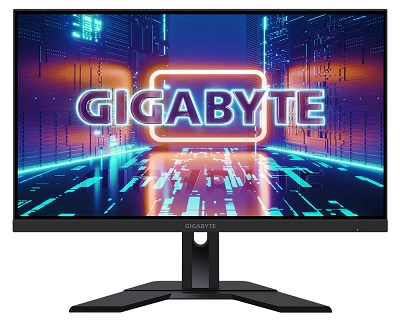
Features and aesthetics
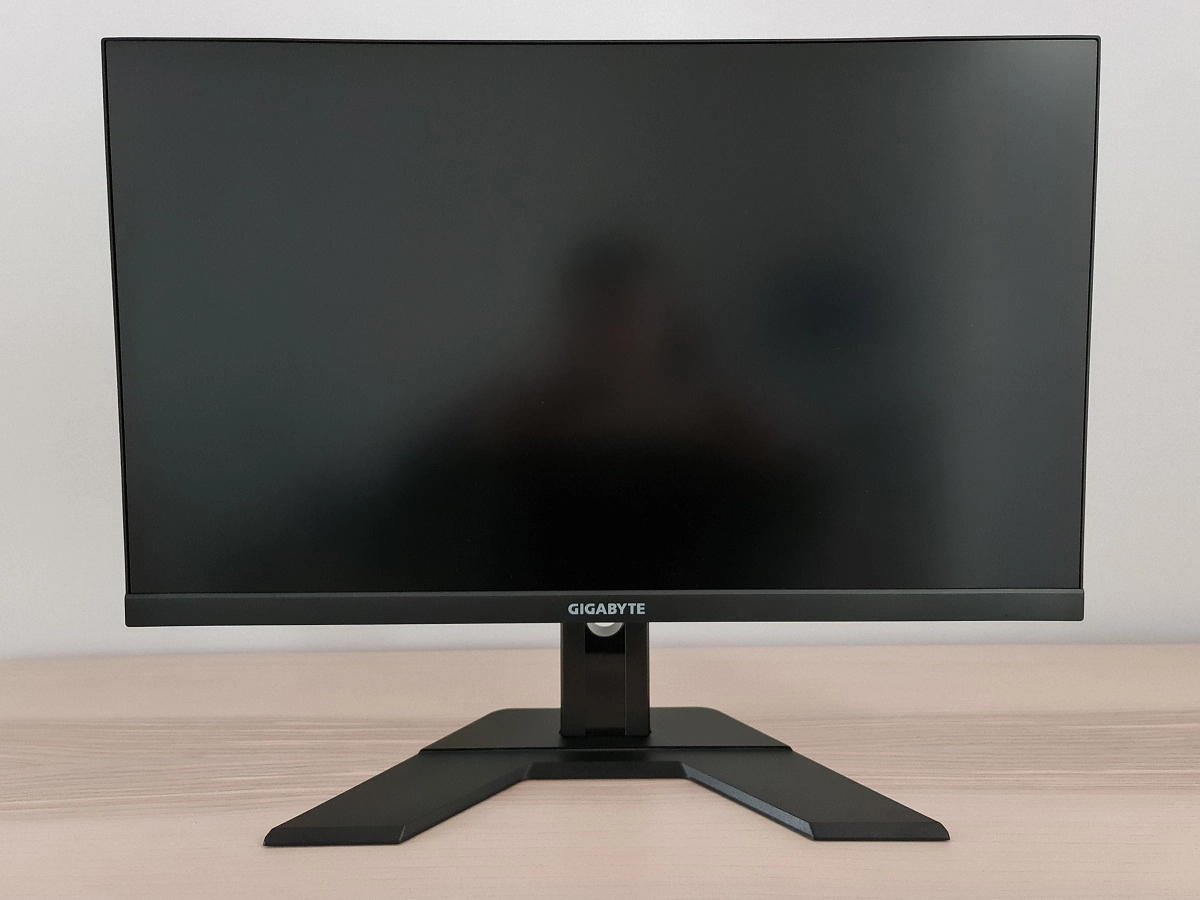
The monitor is slender towards the top, ~16mm (0.63 inches) at thinnest point, but a touch bulkier further down. The stand offers tilt (5° forwards, 20° backwards) and height adjustment (130mm or 5.12 inches). At lowest stand height the bottom of the screen clears the desk by ~40mm (1.57 inches) with the top of the screen ~406mm (16 inches) above the desk. The total depth of the monitor including stand is ~190mm (7.48 inches) with the screen a couple of inches back from the front end of the stand. So a compact design that allows you to have the screen sitting relatively close to the wall if you wish. The base also has a central ‘cut out’ region with diagonally sloped sides, should you wish to use your keyboard at an angle.
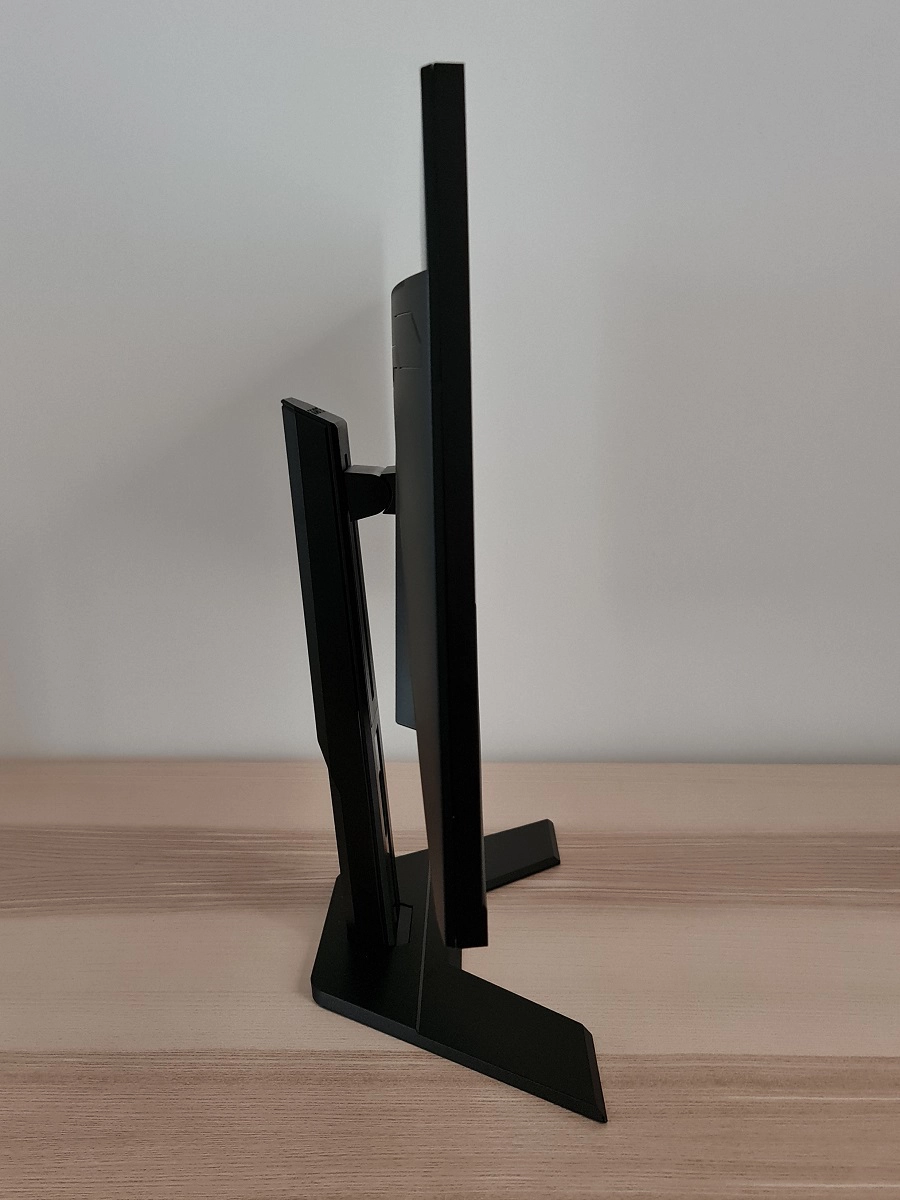
The rear of the monitor is dominated by dark plastics, with a range of matte textures as well as a glossy plastic region towards the top. We don’t much like fingerprint, dust and dirt magnet glossy plastic – but it’s hidden away at the back here and only a minor feature. The stand is screwed on centrally into 100 x 100mm VESA holes – it can be replaced by an alternative VESA 100 compatible solution if preferred. There’s a cable-tidy loop towards the bottom of the stand neck. The ports face downwards and include; a 3.5mm headphone jack, 2 HDMI 2.0 ports, DP 1.2a+ (HDR feature set), USB-C (10W PD, DP Alt Mode, upstream data), 2 USB 3.0 ports (plus upstream) and a DC power input (external ‘power brick’).
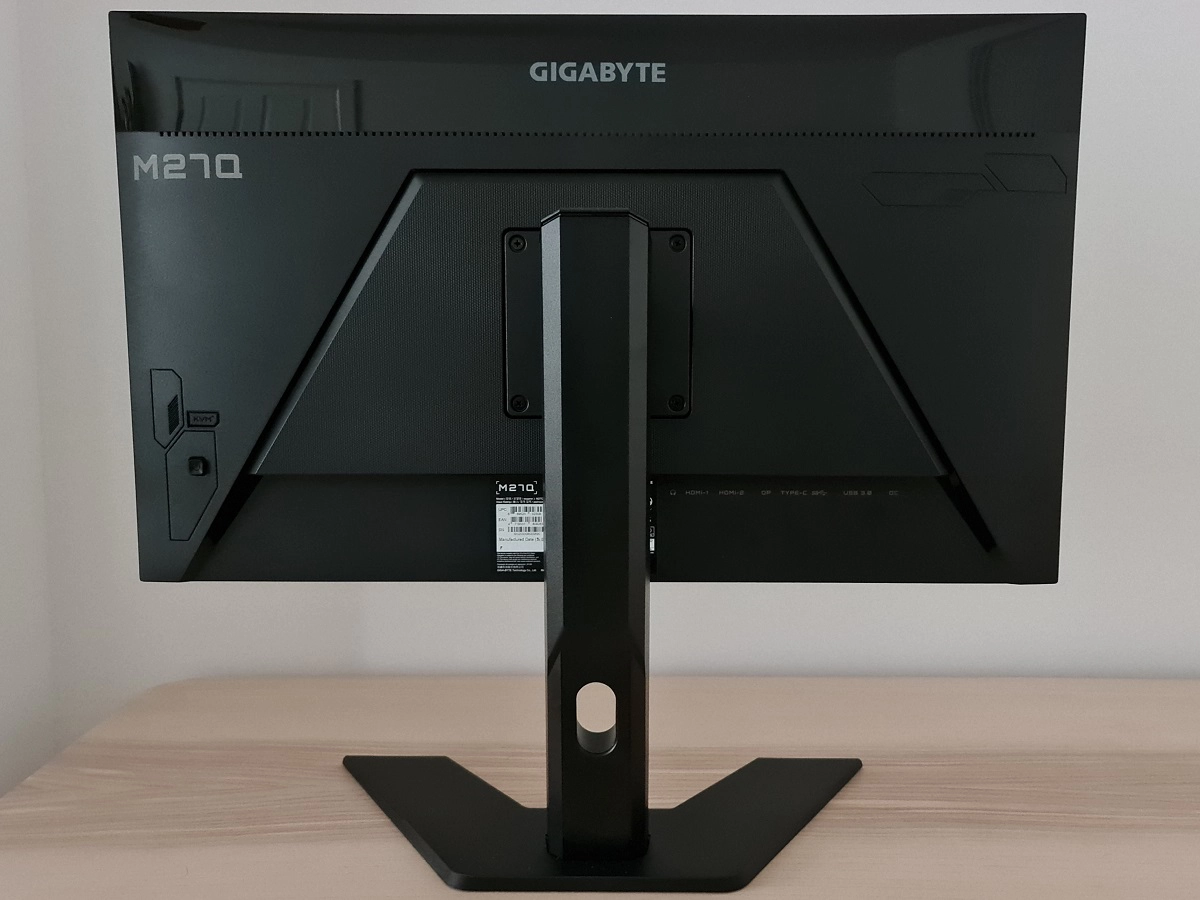
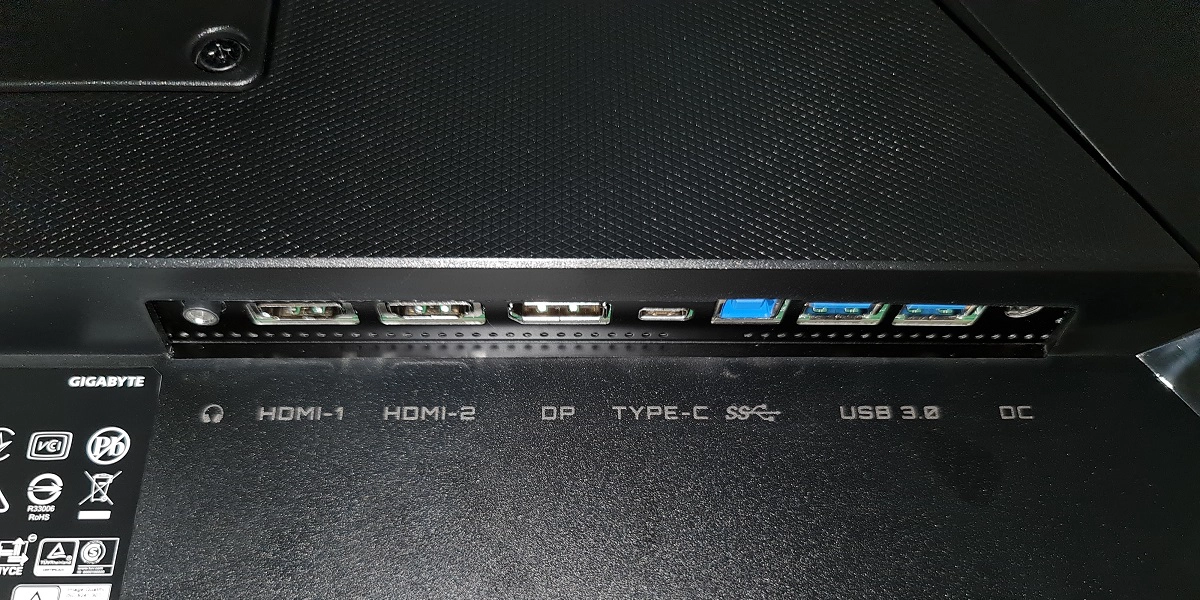
The full capability of the monitor including 2560 x 1440 @170Hz plus HDR and Adaptive-Sync can be leveraged via DP 1.2a+. HDMI 2.0 is limited to 144Hz and supports AMD FreeSync but not Nvidia’s ‘G-SYNC Compatible Mode’. Standard accessories include; a power cable and adaptor, HDMI cable, DP cable and USB cable. The first and second images below show some of the refresh rates supported by the monitor when running the Full HD resolution via DP and HDMI, respectively. A ‘4k x 2k, 3840 x 2160’ downsampling mode is also included when using HDMI, at 60Hz and 59Hz. Potentially useful for games consoles that don’t support a 2560 x 1440 signal but would accept a 3840 x 2160 signal. The third image shows additional refresh rate supported, in the ‘PC’ resolution list – HDMI is limited to 144Hz. The final image shows the refresh rates supported at the native 2560 x 1440 (WQHD) resolution via DP, with HDMI limited to a maximum of 144Hz.
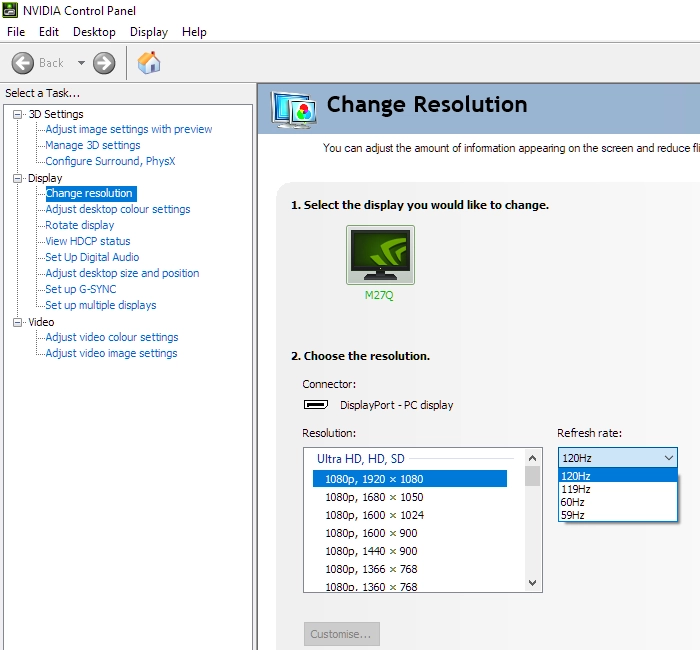
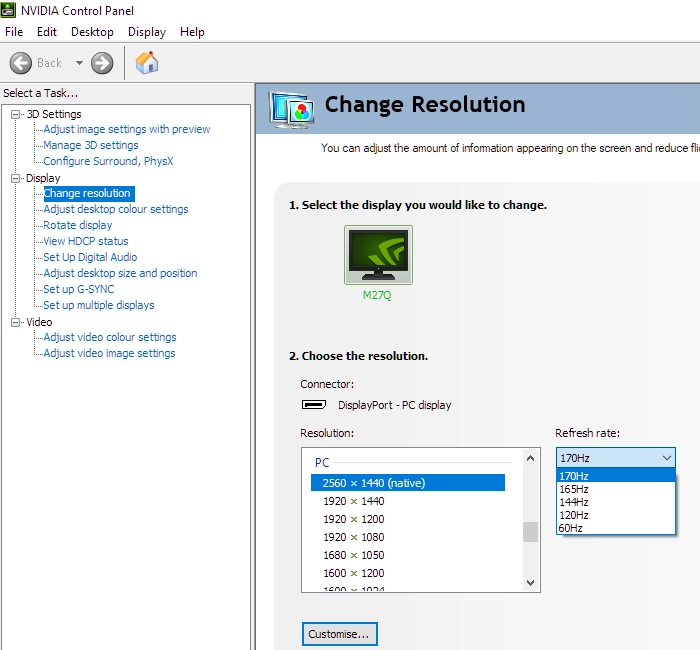
If you’re intending to use the monitor with the PS5 or Xbox Series X/S, be aware that a small settings tweak may be required to ensure 120Hz is selectable. Details can be found in this article.
Calibration
Subpixel layout and screen surface
![]()
As shown above, the monitor uses a BGR (Blue, Green and Red) stripe subpixel layout. This is a noteworthy change from the more usual RGB (Red, Green and Blue). Apple’s MacOS no longer uses subpixel rendering and therefore doesn’t optimise text for one particular subpixel layout to the detriment of another. Microsoft Windows uses a system called ClearType that’s optimised for RGB layouts by default. Most users prefer the look of text with ClearType enabled, it’s what we’ve become used to seeing in most cases and without it things can appear aliased, ‘pixelated’ and simply lacking a clear and crisp appearance. To configure ClearType correctly for a BGR display such as this, open the ‘ClearType Text Tuner’ that’s included with modern versions of the Windows OS. Simply type ClearType into the task bar on Windows 10 to locate this tool.
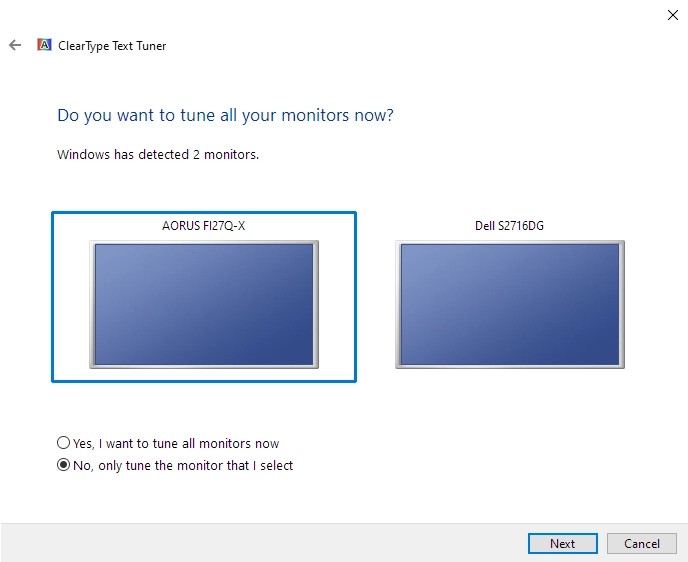
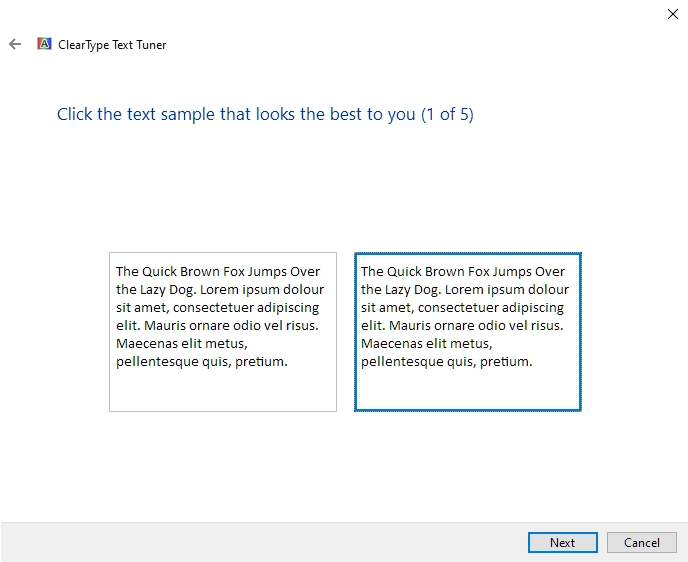
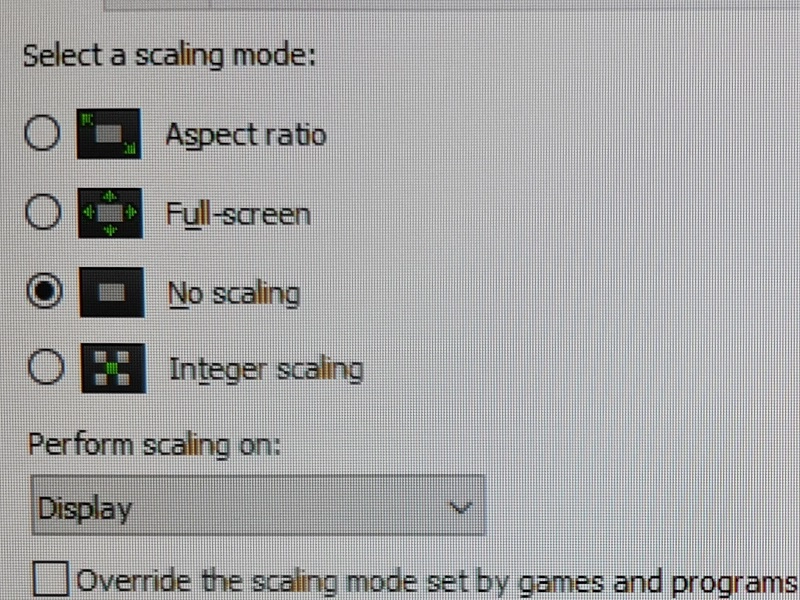


Testing the presets
Monitor Settings Gamma (central average) White point (kelvins) Notes Standard, Gamma 3 (Factory Defaults) 2.3 6834K A vibrant look with good variety and a slight cool tint. Some detail masked at low-end due to gamma tracking, but nothing severe. Gamma OFF 2.3 6711K As above but gamma reduced further for some shades and raised elsewhere. Image balance a bit ‘off’ overall due to wonky gamma handling here. Slightly less of a cool tint. Gamma 1 1.9 6742K Slightly cool-tinted than factory defaults with significantly reduced gamma. Things appear quite washed out overall due to gamma handling. Gamma 2 2.1 6791K Good overall balance, gamma tracks well at low and high ends – slight dips below ‘2.2’ for mid tones but offset to a fair degree by generous colour gamut. Slight cool tint remains. Gamma 4 2.5 6901K Gamma raised above factory defaults, a cinematic look with too much depth overall and masking of detail. Cool tint increased. Gamma 5 2.7 6950K As above with a further gamma increase, far too much depth and masking of detail. Low Blue Light = 10 2.3 5399K A fairly effective Low Blue Light (LBL) setting. The blue colour channel is weakened a fair bit, producing a warmer image and reducing blue light output. The green channel remains quite strong, imparting a green tint. Your eyes adjust to some extent over time. Color Temperature = Warm 2.3 5501K An alternative LBL setting. Quite similar effectiveness without the green tint. The green channel is reduced somewhat and the blue channel is slightly stronger but significantly reduced compared to factory defaults. LBL 10 + Colour Temp. Warm 2.3 4401K Combining the above two settings gives a warmer and somewhat less green look compared to ‘Low Blue Light = 10’ alone. The blue light reduction is significant, a highly effective LBL setting – more so than either setting applied on its own. Color Temperature = User Define 2.3 6499K As factory defaults with cool tint removed, but a very slight green tint introduced. Good overall colour channel balance, however. Picture Mode = sRGB 2.3 6893K This is an sRGB emulation setting. The colour gamut is restricted significantly, curtailing saturation. The default brightness is reduced but can be adjusted. Gamma remains a touch too high and the image has a cool-tint, neither of which can be adjusted in the OSD using this setting. Test Settings (see below) 2.1 6482K A vibrant look to the image with good overall balance.
Out of the box the monitor provided a vibrant image with pleasing variety and a bit of a cool tint. Gamma tracked a bit above the ‘2.2’ curve, including at the low end where there was some masking of dark detail. This was corrected by adjusting to ‘Gamma 2’, which tracked well for the low end but fell a bit below for mid-tones, averaging ‘2.1’. The slight reduction in depth to some shades was offset by the extra saturation from the colour gamut and the deviations in gamma were only fairly minor really. The image below shows these gamma tracking characteristics under our ‘Test Settings’, where various adjustments were made in the OSD. Given the intended uses for the monitor, inter-unit variation and reasonable performance following OSD tweaking alone we will not be using any ICC profiles in this review or including any measurements or graphs using them. We wouldn’t recommend using them unless created for your specific unit using your own calibration device. But we appreciate some users still like to use profiles and some aspects such as gamut mapping for colour-aware applications can be useful. You can download our ICC profile for this model, which was created using our ‘Test Settings’ as a base. You can also download our sRGB profile which was created using and designed for the ‘sRGB’ setting (sRGB emulation mode). Amongst other things, this corrected gamma from ‘2.3’ to ‘2.2’ on our unit – but be aware of inter-unit variation. And note again that these ICC profiles are not used in the review. The monitor also has a few different Low Blue Light (LBL) settings which are easy to activate and deactivate given the flexible and customisable preset arrangement of the monitor. ‘Low Blue Light’ is the main setting and that can be adjusted between ‘0’ (off) and ‘10’ (strongest effect). This setting created a warmer look to the image and significantly reduced blue light output, but maintained a relatively strong green channel and therefore imparted a slight green tint. The alternative is to set the ‘Color Temperature’ to ‘Warm’, which was about as effective as a high ‘Low Blue Light’ setting but didn’t impart the green tint. We didn’t find either setting in isolation quite as effective as we’d like at cutting out blue light output – although they still did a decent job in that respect. So we used a combination of the two, the maximum ‘Low Blue Light’ setting combined with ‘Warm’. This was a very effective LBL setting which we used for our own viewing comfort in the evenings, although not for any specific testing beyond that involving the setting itself. It’s particularly important to reduce blue light exposure in the hours leading up to sleep as blue light is stimulating to the body and affects sleep hormones. Increasing alertness and making it more difficult to ‘shut off’ the mind and body. Our ‘Test Settings’ involved switching to one of the ‘Custom’ presets and making some adjustments to brightness, colour channels and the ‘Gamma’ setting. ‘Standard’, ‘Custom 2’ and ‘Custom 3’ are set up the same way as this by default, so could be used as a base instead if preferred. Note that individual units and preferences vary, so these settings are simply a suggestion and won’t be optimal for all users or units. We’ve also included the refresh rate used in Windows and our preferred ‘Overdrive’ setting used for most of the review, just for reference. These settings only apply to SDR, HDR has separate settings associated with it (is far more restrictive) and is explored in the relevant section of the review. Picture Mode= Custom 1 Brightness= 30 (according to preferences and lighting) Color Temperature= User Define R= 98 G= 98 B= 100 Overdrive= Picture Quality AMD FreeSync Premium= On Refresh rate (Windows setting)= 170Hz An X-Rite i1Display Pro was used to measure the luminance of white and black using various setting on the monitor, including those found in the calibration section. From these values, static contrast ratios were calculated. The table below shows these results, with blue highlights indicating the results with HDR active at full brightness and under our ‘Test Settings’. Black highlights indicate the highest white luminance, lowest black luminance and highest contrast ratio recorded (Aim Stabilizer deactivated). Assume any setting not mentioned was left at default, with the exceptions already noted here or in the calibration section.
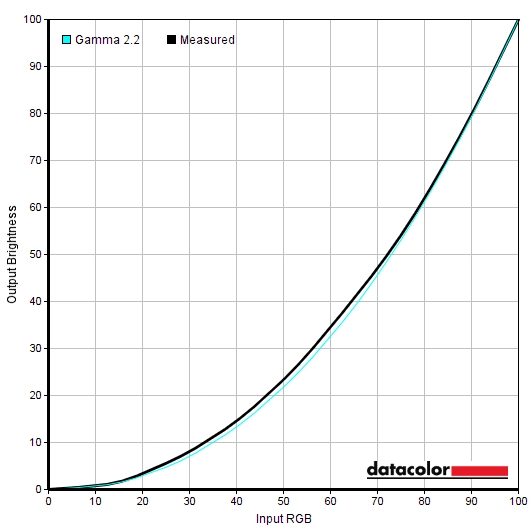
Gamma 'Test Settings'
Test Settings
Contrast and brightness
Contrast ratios
Monitor Settings White luminance (cd/m²) Black luminance (cd/m²) Contrast ratio (x:1) 100% brightness 400 0.36 1111 80% brightness 336 0.30 1120 60% brightness 270 0.24 1125 40% brightness 201 0.18 1117 20% brightness 129 0.12 1075 0% brightness 49 >0.04 <1225 85% brightness (Factory Defaults) 357 0.32 1116 HDR (100% brightness)* 401 0.37 1084 HDR (50% brightness)* 238 0.22 1082 HDR (0% brightness)* 49 <0.04 <1225 Gamma = OFF 362 0.32 1131 Gamma = 1 360 0.32 1125 Gamma = 2 356 0.32 1113 Gamma = 4 349 0.32 1091 Gamma = 5 345 0.32 1078 Low Blue Light = 10 345 0.32 1078 Color Temperature = Warm 346 0.32 1081 LBL 10 + Color Temp. Warm 341 0.32 1066 Color Temperature = User Define 390 0.32 1219 Color Temperature = User Define (100% brightness) 441 0.37 1192 Picture Mode = sRGB 158 0.15 1053 Aim Stabilizer @120Hz 183 0.17 1076 Aim Stabilizer @170Hz 185 0.17 1088 Test Settings 177 0.15 1180
*HDR measurements were made using this YouTube HDR brightness test video, running full screen at ‘1440p HDR’ on Google Chrome. The maximum reading from the smallest patch size (measurement area) that comfortably covered the entire sensor area and colorimeter housing was used for the white luminance measurement, which was ‘4% of all pixels’ in this case. The black luminance was taken at the same point of the video with the colorimeter offset to the side of the white test patch, equidistant between the test patch and edge of the monitor bezel.
The average static contrast with only brightness adjusted was 1110:1, which is respectable for the panel type. This excludes the reading at ‘0’ brightness where the rounding down of the black point provided a contrast value that was a bit too favourable and out of line with other results. The highest contrast ratio recorded was 1219:1, under ‘Color Temperature = User Define’ and all colour channels in their neutral position. Following the minor adjustments made to our ‘Test Settings’, we recorded 1180:1 which is pleasing. Similar to what we recorded on the Gigabyte AORUS FI27Q-P with its Innolux panel and a fair bit higher than we recorded on the ViewSonic XG270QG with its LG Display Nano IPS panel. A contrast ratio above the specified 1000:1 was recorded for all settings tested on the table. The monitor doesn’t offer local dimming and therefore offers no contrast advantage under HDR. The peak luminance under HDR (401 cd/m²) was not particularly high by HDR standards and slightly below the maximum recorded under SDR (441 cd/m²). The minimum white luminance recorded on the table was 49 cd/m², giving a luminance adjustment range of 392 cd/m² with a reasonably low minimum and quite bright maximum.
The monitor includes a ‘DCR’ (‘Dynamic Contrast Ratio’) setting, which can be activated under SDR. The monitor lacks any Dynamic Contrast behaviour under HDR, where Dynamic Contrast enhanced by HDR metadata is sometimes implemented to good effect. With DCR enabled, the backlight brightness adjusts around the brightness level you set in the OSD. This flexibility is good as you can stop it becoming obnoxiously bright or overly dim depending on preferences. We found the adjustments quite gradual and gentle and didn’t really keep up with or in some cases seem appropriate for the content being displayed. We’re not generally a fan of Dynamic Contrast under SDR anyway and prefer manual brightness control.
PWM (Pulse Width Modulation)
The M27Q does not use PWM (Pulse Width Modulation) to regulate backlight brightness at any level. Instead, DC (Direct Current) is used to moderate brightness. The backlight is therefore considered ‘flicker-free’, which will come as welcome news to those sensitive to flickering or worried about side-effects from PWM usage. The exception to this is with ‘Aim Stabilizer’ active, a strobe backlight setting which causes the backlight to flicker at a frequency matching the refresh rate of the display.
Luminance uniformity
Whilst observing a black background in a dark room, using our ‘Test Settings’, we noticed some backlight bleed and clouding, particularly towards the corners of the screen. It’s important to note that individual units vary when it comes to all aspects of uniformity, including backlight bleed and clouding. The following image was taken a few metres back to eliminate ‘IPS glow’. This is a warm slightly orange to golden-green glow that appears towards the edges, particularly near the bottom corners of the screen from a normal viewing position. ‘IPS glow’ blooms out more strongly from sharper angles, as demonstrated in the viewing angles video later on. The luminance uniformity was strong overall. The maximum luminance was recorded at ‘quadrant 9’ towards the bottom right of the screen (169.7 cd/m²). The greatest deviation from this occurred at ‘quadrant 1’ towards the top left of the screen (154.9 cd/m², which is 9% dimmer). The average deviation between each quadrant and the brightest recorded point was 5.63%, which is good. Remember that individual units vary when it comes to uniformity and you can expect further deviation beyond the points measured. The contour map below shows these deviations graphically, with darker greys representing lower luminance (greater deviation from brightest point) than lighter greys. The percentage deviation between each quadrant and the brightest point recorded is also given. The SpyderX Elite was also used to analyse variation in the colour temperature (white point) for the same 9 quadrants. The deviation between each quadrant and the quadrant closest to the 6500K (D65) daylight white point target was analysed and a DeltaE value assigned. Darker shades are also used on this map to represent greater deviation from 6500K. A DeltaE >3 represents significant deviation that may be readily noticed by eye. Results here were variable. Significant deviation was recorded towards the top left (DeltaE 4.3) and above the central region of the screen (DeltaE 3.3), with borderline significant deviation to the left of centre. This was based on deviation from the top right of the screen, recorded as closest to 6500K during this test. No further significant deviation was recorded. Remember again that individual units vary when it comes to uniformity and that you can expect deviation beyond the measured points. The contrast experience was reasonable overall on Battlefield V. The static contrast edges some IPS-type panels, including comparable Nano IPS models which typically have static contrast that’s ~300-400:1 lower than we recorded on this model. But it’s still some way off what VA models typically provide. It isn’t sufficient to give darker shades such as dimly lit interiors a deep or ‘inky’ look, particularly when viewed in a dim to moderately dim room. There’s also a moderate amount of ‘IPS glow’ to contend with, a hazing that brightens up dark shades and is most readily observed towards the bottom corners of the screen from a normal viewing position. This was similar to what we’d usually observe on an IPS-type model of this size, brought out a bit more towards the bottom right on our unit due to some backlight bleed and clouding in that region. It generally had a slightly warm orange to golden-green appearance to it. In addition to these issues potentially bringing this glow out more strongly, sitting closer to the screen or using a higher brightness level will also increase it. The screen surface ensured brighter shades were displayed in a relatively smooth way, only a very light ‘mist’ of graininess and without a clear layered appearance in front of the image. The monitor also provided strong gamma consistency, as typical for an IPS-type panel, ensuring detail levels were maintained appropriately for dark content. Whilst ‘IPS glow’ ate away at this in some regions, there wasn’t a clear vertical detail gradient as you’d see on a TN model. Nor was there the masking of detail centrally (black crush) and some extra detail revealed peripherally associated with VA models. Shadow of the Tomb Raider provided a similar experience, but as it is dominated by dimly lit locations the weaknesses were more apparent. We’d again describe it as reasonable and it does still edge out some IPS-type models, but with the static contrast as it is plus ‘IPS glow’ it certainly doesn’t give you a deep and atmospheric look. Naturally, the weaknesses are less apparent in brighter room lighting. The strong gamma consistency and fairly smooth screen surface without clear layering again stood out as strengths here. We also made some observations using the film Star Wars: The Rise of Skywalker. There are plenty of scenes here that crave a strong contrast performance, with dimly lit interior and exterior locations lit up by bright bursts of light from energy pulses, flames and light sabers. There are also black bars towards the top and bottom of the screen due to the letterboxing from this film’s UltraWide format. These are absent on most content on platforms such as Netflix due to the 16:9 aspect ratio targeted, but found on Hollywood film titles like this. Naturally, the atmosphere wasn’t impressive or cinematic, especially if room lighting conditions are kept on the dimmer side. And the black border at the bottom certainly made the ‘IPS glow’ readily apparent in such conditions. But we could still appreciate a bit of an edge compared to some of the weaker IPS-type performers and enjoyed the strong gamma consistency and relatively ‘smooth’ bright shade display. The Lagom tests for contrast allow specific weaknesses in contrast performance to be identified. The following observations were made in a dark room. The Gigabyte M27Q’s colour gamut (red triangle) was compared with the sRGB (green triangle) and DCI-P3 (blue triangle) reference colour spaces using our ‘Test Settings’, as shown in the first image below. It was also compared to Adobe RGB (purple triangle) in the second image. The gamut fully covers sRGB with quite a bit of extension beyond, particularly significant in the green region of the gamut but also for some areas of blue and red. We measured 95% DCI-P3 coverage, slightly exceeding the 93% specified. But this is underselling the gamut, really, as there’s some extension beyond DCI-P3 in places as well – particularly in the green region. The monitor also offers 95% Adobe RGB coverage, a colour gamut biased towards the green to cyan region of the gamut but similar to sRGB in the red and blue corners of this gamut representation. This is a generous gamut and for standard sRGB content outside a colour-managed environment there’s quite a bit of extra vibrancy and saturation. The monitor also offers an sRGB emulation setting, the ‘sRGB’ preset in the ‘Picture’ section of the OSD. This cuts down on the gamut very effectively without any real extension beyond sRGB and just a touch of under-coverage – 97% sRGB coverage. Unlike some sRGB emulation settings, brightness can be adjusted. Although as usual you can’t adjust gamma or colour channels, with our unit being slightly off-target there as explored earlier. The ‘Overdrive’ setting is also locked, but fortunately to the optimal ‘Picture Quality’ setting. To maximise colour accuracy within the sRGB colour space, for colour-managed workflows, full calibration and profiling with a colorimeter or similar device using the full native gamut is recommended. The quite generous DCI-P3 and Adobe RGB coverage would also make the monitor pretty capable for working within those wider colour spaces. You may try the ICC profile featured in the calibration section which includes gamut mapping for colour-aware applications, but best results are always obtained by calibrating your own unit with your own hardware. Instead of using this ‘sRGB’ setting and putting up with the associated restrictions, AMD users can activate a flexible sRGB emulation setting via the graphics driver. This is done by opening ‘AMD Radeon Software’, clicking ‘Settings’ (cog icon towards top right) and clicking on ‘Display’. You should then ensure that the ‘Custom Color’ slider to the right is set to ‘Enabled’ and ‘Color Temperature Control’ set to ‘Disabled’. It may appear to be set this way by default, but the native rather than restricted gamut is likely in play. If that’s the case, simply switch the ‘Color Temperature Control’ slider to ‘Enabled’ then back to ‘Disabled’ to leverage the sRGB emulation behaviour. This setting is shown in the image below. The gamut below shows results using our ‘Test Settings’ with this driver tweak applied. The colour gamut now offers 97% sRGB coverage, with a touch of extension beyond. Nothing major, but more than was observed using the sRGB emulation setting of the monitor. Regardless, this is a useful setting if you’re an AMD user and wish to gain decent tracking of the sRGB gamut without profiling, including in applications that aren’t colour-managed. And you don’t wish to put up with restrictions associated with the monitor’s sRGB emulation setting. Remember not to use this tweak under HDR, though, or the image will appear significantly oversaturated. The monitor provided a varied and generously saturated palette on Battlefield V. Most content under SDR, including this game, is designed around the sRGB colour space. If the colour gamut of a screen extends beyond sRGB, as it does here, it imparts extra saturation – providing a vibrant look that some users enjoy, but not providing a faithful or accurate look to things. Digital saturation enhancements such as increasing ‘Color Vibrance’ in the OSD or making a similar adjustment in the graphics driver pull shades closer to the edge of the gamut, without expanding the gamut itself. With an expanded gamut instead providing the extra saturation, you maintain good spacing on the gamut and therefore don’t lose shade variety. The gamut in this case is particularly generous in the green region, so some shades containing green showcased particularly strong saturation and vibrancy. This made for some impressively lush-looking forest greens, for example, but some green shades appeared too strongly saturated with a slightly unnatural and neon appearance in places. Reddish browns also had their red component brought out a bit too strongly, although not as strongly as we’ve seen on some models. The extension in the red region is focused more towards the yellow and orange side than pure red. This affected certain skin tones, tree trunks and wooden objects for example which didn’t look quite as neutral as intended and sometimes had a bit of an orange-red push. Blues and cyans shared in the strong saturation – some areas of sky, for example, looked decidedly vivid but not really as they should. We made similar observations on Shadow of the Tomb Raider. There was again a vibrant look to things that some users would appreciate. Pink and purple flowers, deep forest greens and some of Lara Croft’s blue and green dresses were particularly eye-catching. A lively and varied look that some users will enjoy. And one many people are now accustomed to from the wider gamuts appearing on the screen of smartphones, TVs and other devices. There was again noticeable oversaturation, with things looking more vibrant and saturated than the developers intend. This can be curtailed using the sRGB emulation setting described earlier, but you also need to put up with the restrictions imposed there including locked gamma and colour channels. You can at least adjust brightness here, which isn’t always a luxury afforded to you with such settings. Locking things strictly to the restrictive sRGB colour space in this way certainly gives a different and more subdued look to things, but it will be the preferred viewing experience for some. Whether or not this setting is used, we appreciated the strong colour consistency on both titles. Shades maintained good saturation levels and richness throughout the screen, there weren’t clear losses of saturation as you’d see on VA and moreover TN panels. We also made observations using various episodes of the animated TV series Futurama. The vibrant elements here were certainly eye-catching, including some impressively deep blues and purples, bright neon pinks and quite stunning neon greens and electric blues. The shades that were supposed to be more muted certainly were, relative to those shades at least, but were more saturated than intended due to the gamut. This title showcased the strong colour consistency of this model well, bringing out an excellent variety of subtly different shades. And ensuring a given shade appeared relatively similar regardless of where on the screen it was shown. Without the clear shifts in saturation you’d see vertically on TN panels or when comparing central to peripheral regions on VA panels. The image below shows a printed reference sheet of 24 ‘sRGB’ shades, included as part of the Datacolor SpyderCHECKR 24 package. The screen is displaying reference photographs of this printed sheet, in both the same order as printed (right side) and reverse order (left side). The camera is mounted slightly above centre so that the image is representative of what the eye sees from an ergonomically correct viewing position. This, coupled with the inclusion of a flipped version of the shade sheet, allows both accuracy and colour consistency to be visually assessed. Bracketed numbers in our analysis refer to shades on the printed sheet or right side of the screen if they’re ordered consecutively from top left to bottom right. Note that there is always some disparity between how emissive objects (monitor) and non-emissive objects (printed sheet) appear. The representation of shades in this image depends on the camera and your own screen, it’s not designed to show exactly how the shades appear in person. It still helps demonstrate some of the relative differences between the original intended sRGB shade and what the monitor outputs, however. Full profiling and appropriate colour management on the application would provide a tighter match, our intention here is to show what can be expected in a non colour-managed environment. Lagom’s viewing angle tests help explore the idea of colour consistency and viewing angle performance. The following observations were made from a normal viewing position, eyes ~70cm from the screen. On some monitors, particularly but not exclusively those with high refresh rates, interlace patterns can be seen during certain transitions. We refer to these as ‘interlace pattern artifacts’ but some users refer to them as ‘inversion artifacts’ and others as ‘scan lines’. They may appear as an interference pattern, mesh or interlaced lines which break up a given shade into a darker and lighter version of what is intended. They often catch the eye due to their dynamic nature, on models where they manifest themselves in this way. Alternatively, static interlace patterns may be seen with some shades appearing as faint horizontal or vertical bands of a slightly lighter and slightly darker version of the intended shade. We did not observe any static interlace patterns on this model. Under certain conditions we observed some dynamic ‘interlace pattern artifacts’, fine interlaced vertical lines during movement or when scanning our eyes across the screen in a certain way. They were very faint and difficult to spot at higher refresh rates, including 170Hz but anything in the triple digits really. They were more noticeable at relatively low refresh rates of ~60Hz or lower. They aren’t something most users would notice or find bothersome, especially at higher refresh rates. A small utility called SMTT 2.0 was used alongside a sensitive camera to analyse the latency of the M27Q, with over 30 repeat readings taken to help maximise accuracy. Using this method, we calculated 3.71ms (~2/3rds of a frame at 170Hz) of input lag. We measured similar latency at 60Hz. The input lag measured here is influenced by both the element you ‘see’ (pixel responsiveness) and the main element you ‘feel’ (signal delay). It indicates a low signal delay which most users should find acceptable. Note that we don’t have the means to accurately measure input lag with Adaptive-Sync active in a variable refresh rate environment or with HDR active in an HDR environment. Our article on responsiveness explores some of the key concepts related to monitor responsiveness. Chief amongst these is the concept of perceived blur. This is contributed to by both the pixel responsiveness of the monitor and the movement of your eyes as you track motion on the screen. Perceived blur due to eye movement is the dominant form of perceived blur observed on a modern monitor, but both factors play an important role. We also explore a technique called ‘pursuit photography’ in the article, using a moving camera to capture motion in a way that reflects both aspects of perceived blur. This contrasts with static photos or videos which only reflect weaknesses in pixel responsiveness. The images below are pursuit photographs taken using the UFO Motion Test for ghosting, with the UFO moving across the screen from left to right at a frame rate matching the refresh rate of the display. The test is set to run at its default speed of 960 pixels per second, which is a practical speed for such photographs highlights weaknesses well. The monitor was tested at 60Hz (directly below), 120Hz, 144Hz and 170Hz using the main ‘Overdrive’ pixel response time settings; ‘Picture Quality’, ‘Balance’ and ‘Speed’. We have excluded the ‘Auto’ setting from this analysis as it was identical to ‘Balance’ in our testing. Results for 165Hz weren’t included, but performance there was very similar to 170Hz as you might expect. All rows of the UFO Motion Test were used, highlighting a range of pixel transitions between various shades. The final columns show some reference screens for comparison, using what we deem to be their optimal pixel response time settings. The first reference screen is the Gigabyte AORUS FI27Q-P using an Innolux AAS (IPS-type) panel and the second is the ViewSonic XG270QG using a responsive LG Display Nano IPS panel. At 60Hz, shown above, the UFO appears relatively broad without clear internal detailing. This reflects a significant degree of perceived blur due to eye movement and is tied to the 60Hz refresh rate. Varying degrees of trailing can be observed behind the UFOs due to weaknesses in pixel responsiveness. Using the ‘Picture Quality’ setting performance is very impressive, similar to the XG270QG and superior to the FI27Q-P used for reference. There’s no real trailing to speak of – there appears to be a bright ‘halo’ around the UFO for the light background (bottom row), but we didn’t observe this by eye. The ‘Balance’ setting introduces strong overshoot, visible as a colourful inky trail or bright halo trail behind the object, depending on the transition. This appears similar to slightly more intense using the ‘Speed’ setting. We deem ‘Picture Quality’ to be optimal here. The pursuit photographs below show how things looked with refresh rate doubled, to 120Hz. At 120Hz, shown above, the UFO now appears significantly narrower with somewhat clearer internal detail. This indicates a significant reduction in perceived blur due to eye movement. There are again varying degrees of trailing behind the UFOs due to weaknesses in pixel responsiveness. The pixel response requirements are ramped up now, but the monitor still puts in a respectable performance using the ‘Picture Quality’ setting. Things are again similar to the XG270QG reference and superior to the FI27Q-P. There’s a little ‘powdery’ trailing, particularly for the dark background (top row). But this is much less extensive than on the FI27Q-P. The ‘Balance’ setting introduces moderately strong overshoot, even stronger using the ‘Speed’ setting. This has a woven or jagged appearance in places, which are overdrive artifacts and appear as an over-sharpening during movement. We consider the ‘Picture Quality’ setting optimal here. The pursuit photographs below show how things look increased a little more, to 144Hz. At 144Hz, shown above, the UFOs appear just slightly narrower and more sharply focused. This is a relatively minor difference due to an increase of just 24Hz, reflecting a slight further decrease in perceived blur due to eye movement. The trailing characteristics are broadly similar to 120Hz. The bump up in pixel response requirements for optimal performance means the ‘powdery’ trailing now extends a bit further back and is a bit more noticeable. It’s again similar to the XG270QG, which sets quite a high benchmark. A bit bolder behind the yellow UFO cockpit for the dark background, perhaps slightly reduced there for the UFO body and similar for the medium background (middle row) and light background. It’s significantly better than the more extensive trailing observed on the FI27Q-P. The ‘Balance’ setting introduces overshoot, which isn’t quite as strong as at 120Hz but still eye-catching to us in practice and has accompanying overdrive artifacts. The ‘Speed’ setting intensifies this. We again consider ‘Picture Quality’ optimal here. Below pursuit photographs below see things bumped up further, to 170Hz. Although the reference screens are set to 165Hz, this makes very little difference when compared to 170Hz so this comparison still provides value. At 170Hz, shown above, the UFOs appear a little narrower again and a bit more sharply focused. The trailing characteristics are similar to 144Hz overall, but the ‘powdery’ trailing extends a little further back and is just a touch bolder due to the increased pixel response requirements for optimal performance here. The ‘Picture Quality’ setting is again largely comparable to the XG270QG reference. The trailing is a bit more pronounced and somewhat denser behind the cockpit, with the dark background. But elsewhere the trailing is similar. It’s a large improvement over the FI27Q-P reference, which shows some pixel responses that are clearly much slower than optimal here. The ‘Balance’ setting again introduces overshoot, toned down further but still quite visible with some bright ‘halo’ trailing and some ‘inky’ trailing as well. We found this widespread and eye-catching in practice, more extreme for some transitions than those shown here as well. The ‘Speed’ setting intensifies this further. We again consider ‘Picture Quality’ optimal here and it’s what we used for our subjective testing a bit later on. As well as increasing refresh rate to minimise perceived blur due to eye movement, an alternative way to minimise this can be found in the form of the Aim Stabilizer strobe backlight setting. With this enabled, the backlight pulses at a frequency matching the refresh rate of the display – either 120Hz, 144Hz, 165Hz or 170Hz. Sensitivity to this flickering varies and some may find it bothersome whilst others will notice accelerated eye fatigue when using the setting, even if the flickering isn’t actively bothersome to them. The pursuit photographs below were taken with the monitor set to 120Hz using Aim Stabilizer. The ‘Overdrive’ settings are greyed out with this active and set to a high level, whilst the brightness control is also inaccessible and HDR can’t be used. A few reference screens are also shown for comparison, where possible, using their respective strobe backlight settings at 120Hz. The AOC C24G1 using MBR (Motion Blur Reduction) and set to what we consider its optimal setting for that. And the Dell S2417DG using ULMB (‘Ultra Low Motion Blur’). With Aim Stabilizer active at 120Hz, above, the UFO is narrower with more distinct internal detailing even when compared to 170Hz with the setting disabled. The white notches on the UFO body can be counted and the segmentation of the UFO is more distinct. This reflects a significant reduction in perceived blur due to eye movement. The trailing behaviour is quite messy. There’s clear overshoot behind the object, with fragmentation into a strong initial overshoot trail and weaker secondary trail due to the strobe nature of the backlight. There’s also a repetition of the object in front, clearest for the dark background but also visible for the medium background. The all-encompassing term ‘strobe crosstalk’ is used to describe fragmented trailing like this. The KSF phosphors used for the backlight also introduce a colourful (magenta to red) fringe to some of this crosstalk, due to their relatively slow decay rate. The reference shots are free from such clear strobe crosstalk, strong overshoot or colourful fringes. The image set below shows results with a bump up in refresh rate to 170Hz, Aim Stabilizer again active. Note that we didn’t include results for intermediate refresh rates here as they didn’t show any novel behaviour. They just appeared some way between what is shown at 120Hz and 170Hz. The internal detailing is now even more distinct, with the notches appearing somewhat sharper. This reflects another decrease in perceived blur due to eye movement. The weaknesses – in particular strobe crosstalk – are again distinct. The fragments of trailing are more compact now but also more numerous, due to the increase in refresh rate. There is distinct crossover between the main object and some of this strobe crosstalk for the dark and medium background. In practice we found the overall experience in terms of motion clarity slightly improved at 165Hz compared to 120Hz due to the decrease in perceived blur. But the weaknesses were really rather apparent to us in both cases – we explore the impact of this subjectively a bit later on. It’s important to note that strobe crosstalk varies at different areas of the screen. Not all areas refresh simultaneously, so its appearance can differ depending on how high up or low down on the screen movement is being observed. The images below show pursuit photographs running from the top to bottom regions of the screen, with the screen set to 165Hz and Aim Stabilizer active. Strobe crosstalk variation at different points was also observed at 144Hz and 120Hz – the end result was quite similar and we didn’t feel it was worthwhile documenting these observations. Further up the screen the screen strobe crosstalk appears in front of the object. This becomes fainter and eventually disappears a bit further down. For the more central regions of the screen the strobe crosstalk becomes displaced behind the object, becoming increasingly bold further down the screen until it eventually melds into the main object. Making the object appear doubled. Whilst the strobe crosstalk isn’t too strong centrally, and this is the main area of the screen you observe when immersed in something like a competitive FPS game, it is still visible in some central regions and very strong lower down. There’s also that pesky overshoot throughout the screen and some additional issues to consider, as we explore a little later when we provide subjective analysis of this setting. On Battlefield V, with the frame rate keeping up with the refresh rate, the monitor provided a fluid 170Hz experience. The monitor is outputting up to 2.83 times as much visual information per second as a 60Hz monitor. This has two key benefits, one of which is to enhance the ‘connected feel’. Which describes the precision and fluidity as you interact with the game, something also enhanced by the low input lag of the monitor. The other key benefit is a significant reduction in perceived blur due to eye movement, as demonstrated earlier using Test UFO. The bump up from 144Hz to 170Hz with suitable frame rate isn’t as substantial or as readily noticeable as the initial boost from 60Hz to 144Hz (or even up to 120Hz for that matter). But it still provides an edge in terms of ‘connected feel’ and decreased perceived blur which was a nice bonus. Our earlier testing with our preferred ‘Overdrive’ setting also revealed some weaknesses in pixel responsiveness, but only minor ones. This was reflected when gaming on this title, with just a bit of ‘powdery’ trailing in places. Overall, this was just a touch higher than you’d see on models using Nano IPS panels, such as the ViewSonic XG270QG or LG 27GL850. But not massively so – there was nothing that really stood out too much or had a major impact on perceived blur. Where some darker shades were involved in the transition, for example shadowy areas of the game, the ‘powdery trailing’ was sometimes slightly heavier in appearance. Bolder than what we observed on the XG270QG, for example. We still wouldn’t describe it as a ‘heavy powdery’ trailing and it certainly didn’t appear smeary as would typically greet you for similar transitions on a VA model. The performance was far superior to what we observed on the likes of the Gigabyte AORUS FI27Q-P and BenQ EX2780Q at high refresh rates, too. They use Innolux AAS (IPS-type) panels that the Sharp panel of the M27Q comfortably outperforms. We made similar observations on Shadow of the Tomb Raider. This title doesn’t really require rapid pixel responses, particularly low input lag or a refresh rate of 170Hz for an enjoyable experience. It’s not a fast paced or in any way competitive game. Even so, it was nice to have these boxes ticked. There are plenty of dark shades here, so again some instances of ‘powdery’ trailing which was a touch bolder than for transitions involving only medium to lighter shades. But this was still quite constrained, much more so than the more widespread and noticeable weaknesses on slower IPS-type models or your typical VA experience. We wouldn’t describe it as anything approaching ‘smeary’ in appearance. So certainly a respectable 170Hz performance on this title, overall. We also observed a range of video content, including ~24-30fps movie content and 60fps videos. In both cases the monitor performed very well. There were no clear weaknesses from the pixel responses of the monitor, such as overshoot or distinct trailing from slower than optimal pixel transitions. The frame rate of the content really acted as the key barrier to fluidity. As an Amazon Associate I earn from qualifying purchases made using the below link. Where possible, you’ll be redirected to your nearest store. Further information on supporting our work. We’ve already introduced the Aim Stabilizer feature, its principles of operation and how it performs using specific tests. When using Aim Stabilizer or any strobe backlight feature, it’s vital that your frame rate matches the refresh rate of the display exactly. Otherwise you’re left with very clear stuttering or juddering. This is because there’s very little perceived blur due to eye movement to mask it. As with most strobe backlight technologies, you can’t use Adaptive-Sync at the same time as Aim Stabilizer. As explored using the UFO Motion Test for ghosting earlier, activating this feature significantly reduced perceived blur due to eye movement. We used the feature on a range of games but will simply focus on Battlefield V running at a constant 170Hz with the feature active. Our overall observations were similar when using this model at lower refresh rates, although overshoot and indeed flickering was intensified at reduced refresh rates. The setting achieved its main goal of significantly reducing perceived blur due to eye movement. The game world retained more detail and sharper focus during movement, including rapid turns of the character. This makes tracking and engaging enemies potentially a bit easier and can provide a competitive edge. There were quite a few visual distractions when using this setting, however. Particularly lower down the screen, there was strobe crosstalk which was at times about as bold as the object itself. Causing duplication. This was much weaker centrally, which is where your main focus is. Although even centrally and higher up we noticed some strobe crosstalk – sometimes with a distinct colourful magenta fringe due to the phosphors used on the backlight. Usually where brighter shades move against a darker background. We also observed strong overshoot that appeared throughout the screen. Bright ‘halo’ trailing and some colourful and sometimes ‘inky’ trailing which quite distracting in our view. We also observed some flashes of colour such as cyan and magenta in places when observing lighter coloured objects. This is quite common on wide gamut models when a strobe backlight setting is used, but was quite noticeable in this case. These visual distractions, the flickering, inability to adjust brightness or use Adaptive-Sync at the same time really limit the appeal of this setting. Some users may still find some use for it, competitively speaking, but most will want to avoid it. AMD FreeSync is a variable refresh rate technology, an AMD-specific alternative to Nvidia G-SYNC. Where possible, the monitor dynamically adjusts its refresh rate so that it matches the frame rate being outputted by the GPU. Both our responsiveness article and the G-SYNC article linked to explore the importance of these two elements being synchronised. At a basic level, a mismatch between the frame rate and refresh rate can cause stuttering (VSync on) or tearing and juddering (VSync off). FreeSync also boasts reduced latency compared to running with VSync enabled, in the variable frame rate environment in which it operates. FreeSync requires a compatible AMD GPU such as the Radeon RX 580 used in our test system. The monitor must support ‘VESA Adaptive-Sync’ for at least one of its display connectors, as this is the protocol that FreeSync uses. The Gigabyte M27Q supports FreeSync Premium via DP 1.2a+ and HDMI 2.0 on compatible GPUs and systems. Note that HDR can be activated (at the same time as FreeSync) as well. You need to make sure ‘AMD FreeSync Premium’ is set to ‘ON’ in the ‘Gaming’ section of the OSD. On the GPU driver side recent AMD drivers make activation of the technology very simple. You should ensure the GPU driver is setup correctly to use FreeSync, so open ‘AMD Radeon Software’, click ‘Settings’ (cog icon towards top right) and click on ‘Display’. You should then ensure that the first slider is set to ‘Enabled’ as shown below. The top image shows the monitor connected by DP and the bottom image by HDMI. The setting is referred to as ‘AMD FreeSync Premium’ in both cases, although the exact wording may depend on the driver version you’re using. To configure VSync, open ‘AMD Radeon Software’. Click ‘Settings’ (cog icon towards top right) and click ‘Graphics’. The setting is listed as ‘Wait for Vertical Refresh’. This configures it globally, but if you wish to configure it for individual games click ‘Game Graphics’ towards the top right. The default is ‘Off, unless application specifies’ which means that VSync will only be active if you enable it within the game itself, if there is such an option. Such an option does usually exist – it may be called ‘sync every frame’ or something along those lines rather than simply ‘VSync’. Most users will probably wish to enable VSync when using FreeSync to ensure that they don’t get any tearing. You’d therefore select either the third or fourth option in the list, shown in the image below. Above this dropdown list there’s a toggle for ‘Radeon Enhanced Sync’. This is an alternative to VSync which allows the frame rate to rise above the refresh rate (no VSync latency penalty) whilst potentially keeping the experience free from tearing or juddering. This requires that the frame rate comfortably exceeds the refresh rate, not just peaks slightly above it. We won’t be going into this in detail as it’s a GPU feature rather than a monitor feature. As usual we tested a range of game titles using AMD FreeSync and found the experience similar in all cases. Any issues affecting one title but not another suggests a game or GPU driver issues rather than a monitor issue. We’ll therefore simply use Battlefield V as an example for this section. The in-game graphics options are flexible enough to allow the full VRR range to be assessed. Our Radeon RX 580 isn’t a very powerful GPU, so maintaining 170fps at the native WQHD resolution is difficult. Even with graphics settings set to ‘low’, it was common to see dips significantly below this and at many points the average frame rate closer to 100fps. Without a VRR technology like FreeSync, even the slightest dips below 170fps would cause obvious (to us) tearing if VSync was disabled or stuttering if VSync was enabled. Sensitivity to tearing and stuttering varies, but for those sensitive to it the technology is very nice to have. There was a decrease in ‘connected feel’ and increase in perceived blur related to the drop in frame rate. That isn’t something FreeSync can address. This becomes even more pronounced as frame rate drops further – but the lack of tearing and stuttering was easy for us to appreciate. The technology worked all the way down to 48Hz (48fps in the game), below that LFC (Low Framerate Compensation) kicked in. This worked well to keep tearing and stuttering at bay below 48fps by ensuring the refresh rate stuck to a multiple of this. As usual, there was a momentary stuttering when the technology activated or deactivated – not a problem if you’re only occasionally passing the boundary. But if you’re frequently passing it there’s the potential for annoyance. A big tick for this model is that our preferred ‘Overdrive’ setting (‘Picture Quality’) worked well across the entire VRR range. There was no obvious overshoot (mere traces, for some transitions) using this setting, whilst pixel responsiveness remained very respectable. Any higher setting produced strong to extreme overshoot. So you don’t need to worry about adjusting the overdrive setting based on refresh rate in this case. As noted earlier, AMD FreeSync makes use of Adaptive-Sync technology on a compatible monitor. As of driver version 417.71, users with Nvidia GPUs (GTX 10 series and newer) and Windows 10 can also make use of this Variable Refresh Rate (VRR) technology. When a monitor is used in this way, it is something which Nvidia refers to as ‘G-SYNC Compatible’. Some models are specifically validated as G-SYNC compatible, which means they have been specifically tested by Nvidia and pass specific quality checks. With the M27Q, you need to connect the monitor up via DisplayPort and enable ‘AMD FreeSync Premium’ in the ‘Gaming’ section of the OSD. This enables Adaptive-Sync on the monitor and will unlock the appropriate settings in Nvidia Control Panel. When you open up Nvidia Control Panel, you should then see ‘Set up G-SYNC’ listed in the ‘Display’ section. Ensure the ‘Enable G-SYNC, G-SYNC Compatible’ checkbox and ‘Enable settings for the selected display model’ is checked as shown below and press ‘OK’. If you’ve enabled ‘G-SYNC Compatible’ and it was previously disabled, the monitor should re-establish its connection with the system and the technology should now be active. Our suggestions regarding use of VSync also apply, but you’re using Nvidia Control Panel rather than AMD Radeon Software to control this. The setting is found in ‘Manage 3D settings’ under ‘Vertical sync’, where the final option (‘Fast’) is equivalent to AMD’s ‘Enhanced Sync’ setting. You’ll also notice ‘G-SYNC Compatible’ listed under ‘Monitor Technology’ in this section, as shown below. Make sure this is selected (it should be if you’ve set everything up correctly in ‘Set up G-SYNC’). On an ideal monitor, HDR (High Dynamic Range) involves very bright light shades and very deep dark shades being displayed simultaneously. The monitor should also be able to display an excellent range of shades between these extremes, including highly saturated alongside more muted ones. The monitor would ideally support per-pixel illumination (e.g. backlightless technology such as OLED) or failing that offer a very large number of dimming zones with precise control. A solution such as FALD (Full Array Local Dimming) with a good number of dimming zones, for example. This would allow some areas of the screen to exhibit strong brightness whilst others remain very dim. Colour reproduction is also an important part of HDR, with the ultimate goal being support for a huge colour gamut, Rec. 2020. A more achievable near-term goal is support for at least 90% DCI-P3 (Digital Cinema Initiatives standard colour space) coverage. Finally, HDR makes use of at least 10-bit precision per colour channel, so its desirable that the monitor supports at least 10-bits per subpixel. The HDR10 pipeline is the most widely supported HDR standard used in HDR games and movies. That’s what’s supported in this case. For most games and other full screen applications that support HDR, the Gigabyte automatically switches into its HDR operating mode. As of the latest Windows 10 update, relevant HDR settings in Windows are found in ‘Windows HD Color settings’ which can be accessed via ‘Display settings’ (right click the desktop). Most game titles will activate HDR correctly when the appropriate in-game setting is selected. A minority of game titles that support HDR will only run in HDR if the setting is active in Windows as well. Specifically, the toggle which says ‘Play HDR games and apps’. If you want to view HDR movies on a compatible web browser, for example, you’d also need to activate the ‘Stream HDR Video’ setting. These settings are shown below. Also note that there’s a slider that allows you to adjust the overall balance of SDR content if HDR is active in Windows. This is really just a digital brightness slider, so you lose contrast by adjusting it. When viewing SDR content with HDR active in Windows things appeared better-balanced than we’ve seen on some models, but as explored shortly you lose access to many adjustments in the OSD, including gamma and colour channels. We’d recommend only activating HDR in Windows if you’re about to specifically use an HDR application that requires it, and have it deactivated when viewing normal SDR content on the monitor. To keep things as simple as possible, we’ll just focus on a few titles in this section; Battlefield V and Shadow of the Tomb Raider. We’ve tested both titles on a broad range of monitors under HDR and we know they’re a good test for monitor HDR capability. The experience described here is largely dictated and limited by the screen itself. Although our testing here is focused on HDR PC gaming using DisplayPort, we made similar observations when viewing HDR video content on the Netflix app. There are some additional points to bear in mind if you wish to view such content. We also made observations using HDMI, which would be used when viewing HDR content on an HDR compatible games console for example, and things were very similar. Testing on both our Nvidia and AMD GPUs showed that the HDR implementation was similar in both cases, too. As is often the case under HDR, many settings are inaccessible. This includes gamma, sharpness and colour channels being greyed out. Somewhat unusually for HDR, brightness can be adjusted and no sharpness filter is applied by default. You can access the ‘Super Resolution’ slider if you wish to add a sharpness filter on top. All presets acted the same way under HDR and had no specific effect on the image, except that some applied an additional sharpness filter – ‘Reader’ did this mildly and ‘Movie’ strongly. We found the experience decidedly ‘non HDR-like’ with reduced brightness so preferred to just leave this at the default of ‘100’. Reducing the brightness too much seemed to make things more muted than an equivalent brightness adjustment under SDR, too. The Gigabyte M27Q is VESA DisplayHDR 400 certified. This is the lowest level of certification VESA certifies for, so only a basic HDR experience is provided. The colour gamut requirements are quite loose here, although we recorded 95% DCI-P3 on this model which is actually a box ticked even for higher tiers. This is shown in the graphic below, taken from earlier in the review. The red triangle shows the monitor’s colour gamut, the blue triangle DCI-P3 and green triangle sRGB. With the monitor providing a decent match for the near-term target developers have in mind under HDR (DCI-P3), the colour reproduction under HDR was pretty respectable overall. The game developers have this in mind as the near-term target for HDR, so unlike where sRGB is targeted (under SDR) you don’t have the same oversaturated look to shades. The yellows of yellowish greens and reds of some reddish brown shades weren’t brought out too strongly, for example. Giving tree trunks and foliage a more natural look, whilst keeping Lara’s skin tone and hair looking more appropriate as well. There were some good dashes of vibrancy where the developers wanted there to be. Fires had a vivid look to them and there were some very lush-looking green shades in forested areas for example. The colour gamut actually extends quite a way beyond even DCI-P3 for some green shades and encroaches more on the longer-term Rec. 2020 standard here, giving quite a lively but still appropriate look to green-dominant shades. Some shades, such as those fires, some brightly painted orange objects and blue dresses weren’t as vivid as they would be with an even more generous colour gamut. But better than most HDR models we’ve seen in this tier. There was also a certain sapping away of depth due to the universally high brightness of the backlight, as we cover shortly. The nuanced shade variety facilitated by 10-bit colour reproduction was highlighted nicely here. The sun streaming in from above, the spray from the waterfall and some of the dimmer details amongst shaded rocks and vegetation all benefited. With the maximum luminance fairly limited by HDR standards and a lack of local dimming, there were no advantages to brightness or contrast under HDR. This is where the VESA DisplayHDR 400 standard is again very limited. Bright elements such as the sun glint on the water and the bright sky above didn’t stand out as they can in this scene on more capable HDR performers. And the nuanced shade variety for brighter shades could have done with further accentuation from a higher peak luminance and effective local dimming. Darker shaded areas such as rocks and vegetation suffered from a lack of depth, too. With ‘IPS glow’ brought out relatively strongly due to the high backlight luminance levels here. Unlike some models with this DisplayHDR level, the monitor does not support Dynamic Contrast under HDR. Ideally it would use Dynamic Contrast with precision enhanced by HDR metadata – this sort of reactive solution some models without local dimming, like the ViewSonic XG270QC, employ to good effect. You also have to be careful not to activate ‘DCR’ before enabling HDR, as instead of using any sort of Dynamic Contrast it simply upsets the image. The video section below gives a run-through of the overall HDR capability of the display using Shadow of the Tomb Raider as an example. It may be desirable or necessary to run the monitor below its native 2560 x 1440 (WQHD). Perhaps for performance reasons, or because a system such as a games console is being used that doesn’t support the WQHD resolution. The monitor provides scaling functionality via both DP and HDMI. It can be run at resolutions such as 1920 x 1080 (Full HD) and can use an interpolation (scaling) process to map the image onto all pixels of the screen. The refresh rates supported were covered at the end of the ‘Features and aesthetics’ section, but the monitor only supports interpolation at up to 144Hz maximum regardless of input used. To ensure the monitor rather than GPU is handling the scaling process, as a PC user, you need to ensure the GPU driver is correctly configured so that the GPU doesn’t take over the scaling process. For AMD GPU users, the driver is set up correctly by default to allow the monitor to interpolate where possible. Nvidia users should open Nvidia Control Panel and navigate to ‘Display – Adjust desktop size and position’. Ensure that ‘No Scaling’ is selected and ‘Perform scaling on:’ is set to ‘Display’ as shown in the following image. As usual, if you’re running the monitor at 2560 x 1440 and viewing 1920 x 1080 content (for example a video over the internet or a Blu-ray, using movie software) then it is the GPU and software that handles the upscaling. That’s got nothing to do with the monitor itself – there is a little bit of softening to the image compared to viewing such content on a native Full HD monitor, but it’s not extreme and shouldn’t bother most users. The video below shows the monitor in action. The camera used, processing done and your own screen all affect the output – so it doesn’t accurately represent what you’d see in person when viewing the monitor. It still provides useful visual demonstrations and explanations which help reinforce some of the key points raised in the written piece. There are now a large number of 27” 2560 x 1440 (WQHD) models on the market, with a range of different panels and price points. The Gigabyte M27Q uses a novel IPS-type panel from Sharp, which in many respects delivered a pleasing performance. The resolution and screen size combination delivered a respectable pixel density, providing a good amount of desktop real-estate and providing good clarity potential to text and other suitably high resolution content. The pixel layout of this model was unconventional, which was largely overcome by correct setup of Windows ClearType. Even following that some ‘fringing’ issues remained, not always related to text. But we’d classify these issues as minor and not something most users would notice or find bothersome. The monitor offered simple styling and a fairly basic overall construction, especially when compared to the heftier powder-coated metal stands of the AORUS product line. But the stand design was functional and although full adjustability wasn’t provided, tilt and height adjustment was along with VESA holes for those seeking more flexibility. The OSD, as usual for Gigabyte models, was very comprehensive and could be controlled instead using the feature-rich Sidekick software suite. The contrast performance was largely as expected for the panel type. Static contrast exceeded specifications slightly, sitting just below 1200:1 following the adjustments made to our ‘Test Settings’. A fair improvement over some competing models, most notably those with Nano IPS panels. Certainly not sufficient for a deep or atmospheric experience in dimmer room lighting, especially when coupled with the moderate amount of ‘IPS glow’ that went with the territory. The screen surface was a light to very light matte anti-glare solution with a relatively smooth finish, keeping lighter shades free from clear graininess and preventing a layered appearance in front of the image. The monitor provided vibrant and varied colour output, with a generous colour gamut 95% DCI-P3 and 95% Adobe RGB recorded. If strong saturation or the use of such colour gamuts in your workflow isn’t your thing, an sRGB emulation mode is offered that allows brightness to be adjusted. More than can be said for some such settings, even though the usual restrictions including locked gamma and colour channels still applied. The generous colour gamut coverage worked well for HDR content, where the near-term target is the DCI-P3 colour space. Elements that should look vibrant did, whilst more muted natural shades appeared more appropriate than under SDR. An even more generous colour gamut would have injected a bit more vibrancy, but we’d still put this above the colour output we’ve seen from many monitors under HDR. 10-bit processing did its thing to enhance nuanced shade variety, even though GPU dithering was relied upon for that. On the contrast side, under HDR, things were far less impressive. No local dimming, not even any Dynamic Contrast and a far from spectacular peak luminance. The experience was anything but dynamic, not only when considering dark vs. light elements more broadly but also by sapping away at shade depth more generally. In some scenes shades appeared less rich and saturated than they could because of this, despite the generous colour gamut. Ticking some boxes but not others under HDR is like a broken chain, really. Ticking only some boxes is all too common for monitors touting ‘HDR’ capability, even those significantly more expensive than this one. Responsiveness was strong overall, with low input lag and a competent 170Hz performance. Whilst there were some weaknesses in pixel responsiveness, they were only minor. Coming quite close to Nano IPS models in fact, which set a pretty high bar in this respect. We didn’t observe bothersome overshoot using the optimal ‘Overdrive’ setting, even at lower refresh rates. This was refreshing to see and particularly useful when using Adaptive-Sync, as usually you’d need to consider switching to a different pixel overdrive setting depending on your expected frame rate. Adaptive-Sync worked nicely on a broader level, too, on both our AMD (FreeSync) and Nvidia (‘G-SYNC Compatible Mode’) GPUs. Without nasty surprises such as flickering or unexpected stuttering. The floor of operation was slightly higher on the Nvidia GPU side, but didn’t stray too far – and LFC or a similar frame to refresh multiplication technology kicked in below that anyway. Overall we consider this to be a capable monitor for PC gaming and general desktop use, with very competitive pricing. Whilst there are some minor points you could moan about, such as the subpixels or basic stand design, the overall price to performance ratio is excellent. And in many respects it’s a more compelling option than its competitors. As an Amazon Associate I earn from qualifying purchases made using the below link. Where possible, you’ll be redirected to your nearest store. Further information on supporting our work.
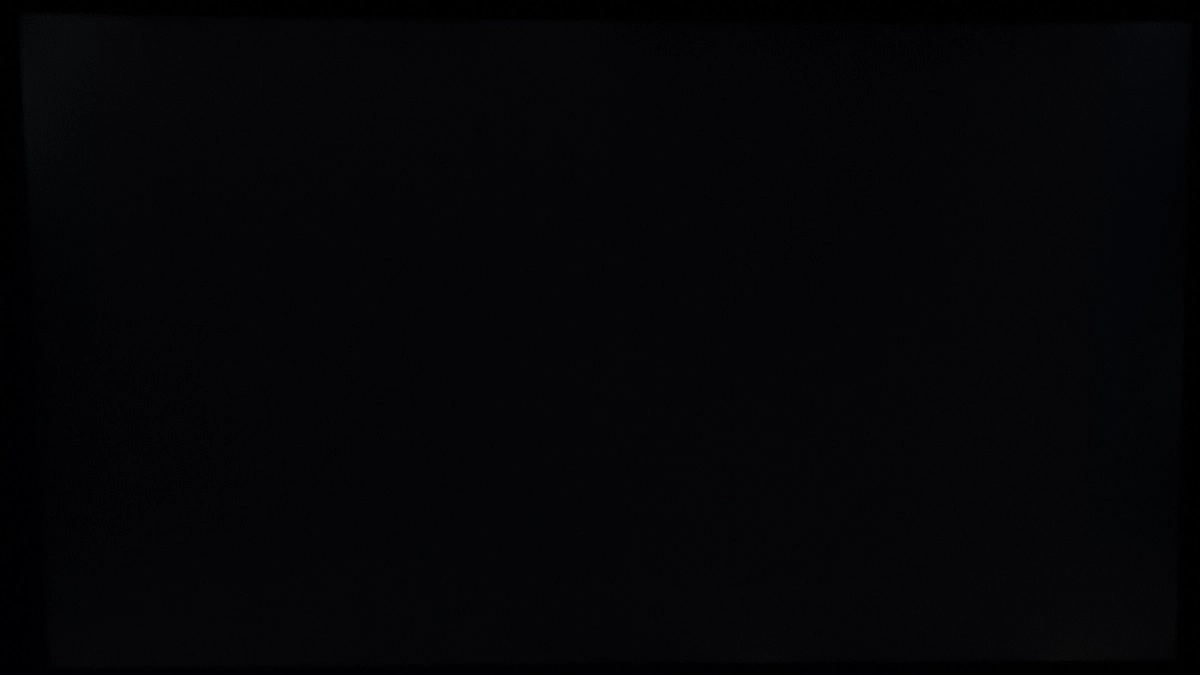
The SpyderX Elite was used to assess the uniformity of lighter shades, represented by 9 equally spaced white quadrants running from the top left to bottom right of the screen. The table below shows the luminance recorded at each quadrant as well as the percentage deviation between each quadrant and the brightest recorded point.

Luminance uniformity table
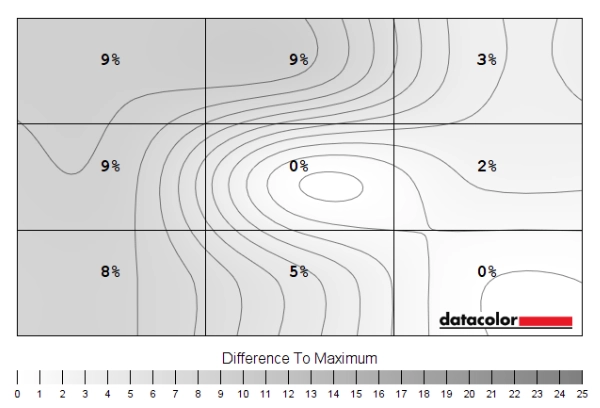
Luminance uniformity map
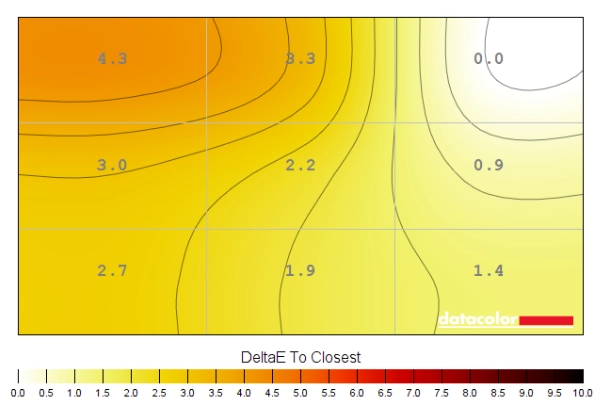
Colour temperature uniformity map
Contrast in games and movies
Lagom contrast tests
Colour reproduction
Colour gamut
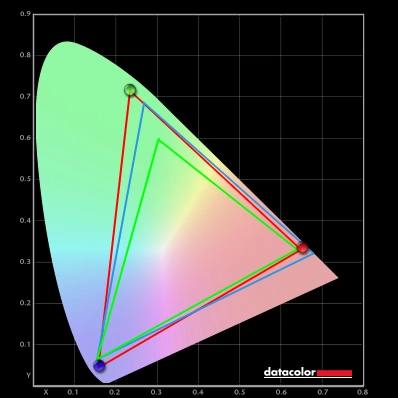
Colour gamut 'Test Settings'
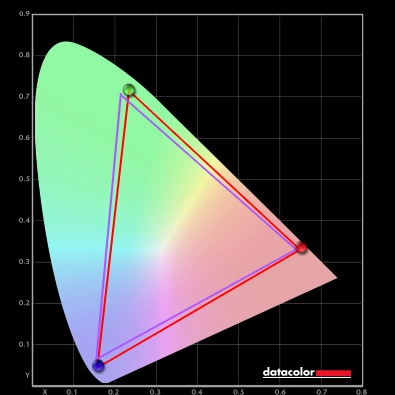
Colour gamut 'Test Settings' vs. Adobe RGB
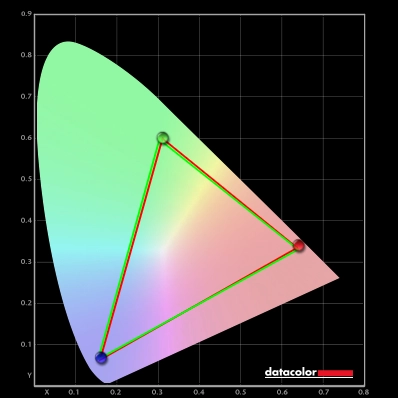
Colour gamut 'sRGB'
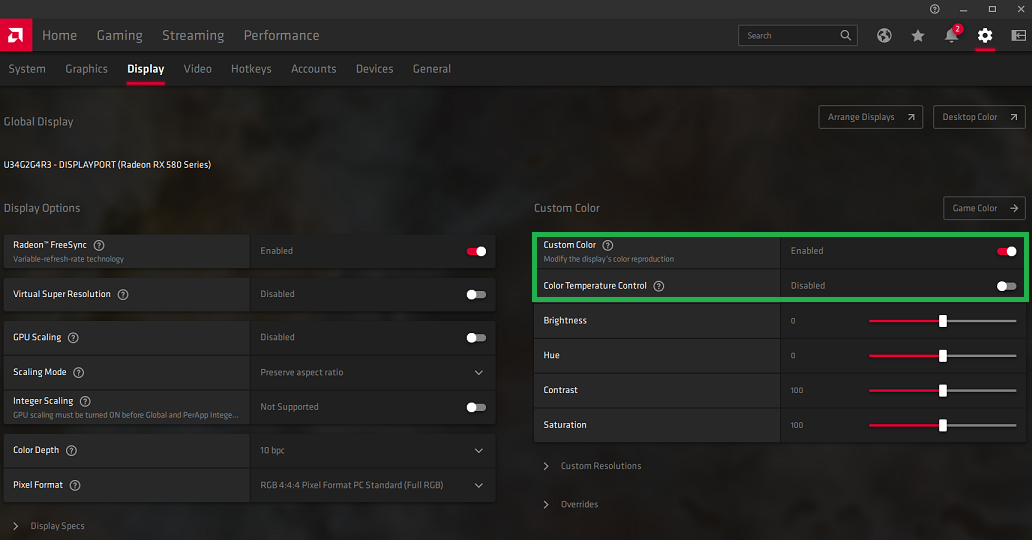
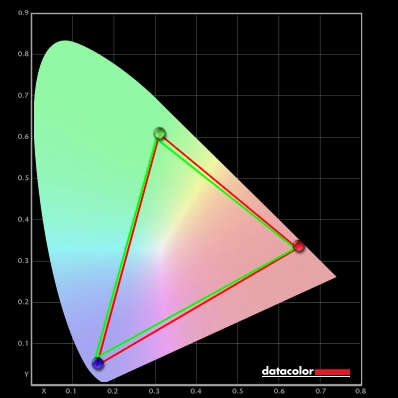
Colour gamut AMD 'CTC disabled' setting
Colour in games and movies
Shade representation using SpyderCHECKR 24
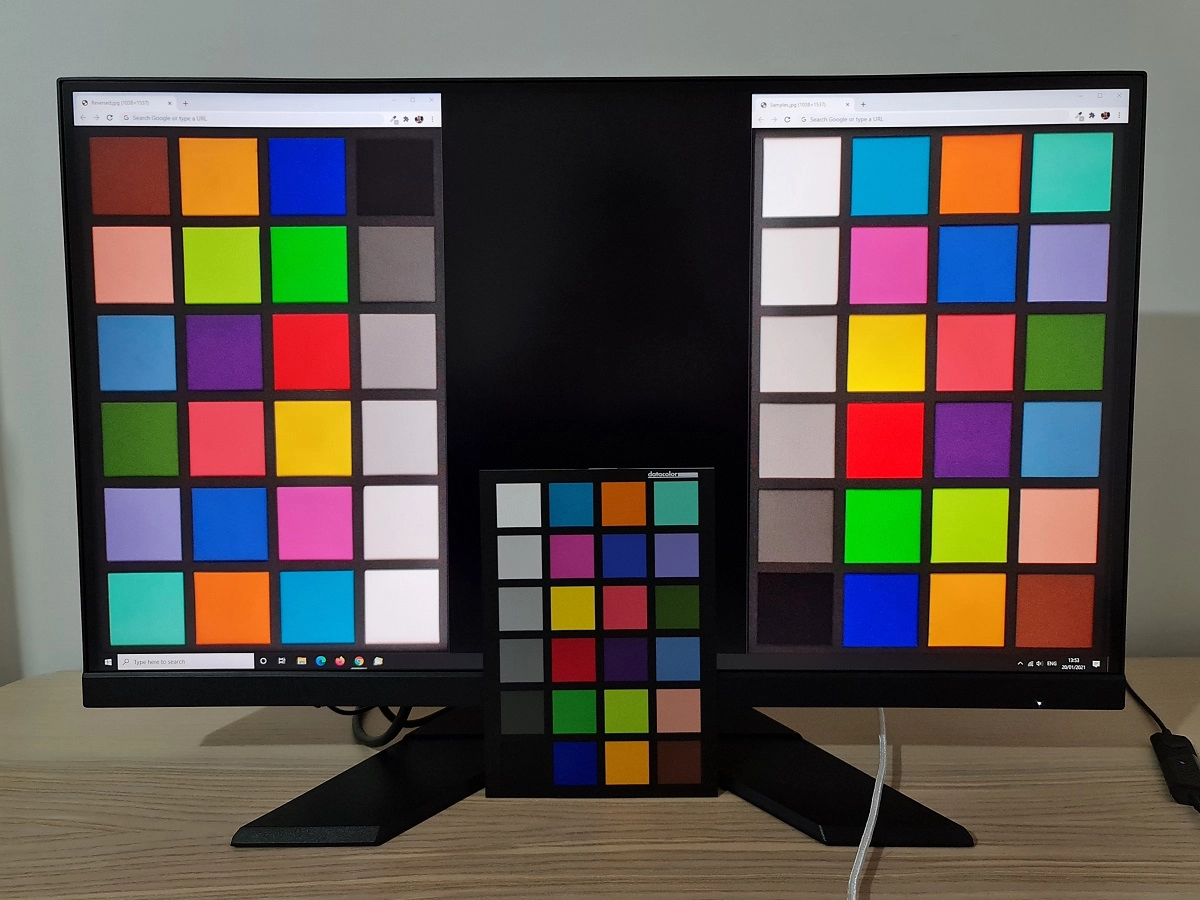
The monitor represents shades in vibrant and saturated way. This is most noticeable on green-biased shades, such as dark lime green (18) and yellow green (19). These appear more saturated and punchier than intended, somewhat neon in their appearance. This is due primarily to the generous extension beyond sRGB in the green region of the gamut. Some reddish orange hues are brought out too strongly due primarily to gamut extension there, with peach pink (20) appearing with too much of a reddish-pink tone and medium orange (3) and light chocolate brown (24) appearing with overly punchy orange tones. This is more pronounced for light chocolate brown when it’s shown at the bottom right. This is due to a uniformity issue (significant colour temperature difference) when comparing to the top left. The camera exaggerates this, in practice the shade towards the top left appears more reddish than in the image. The representation of some shades is very pleasing, such as aquamarine (4) and grey blue (16). The consistency of the screen was strong without the sort of clear saturation shifts you’d observe on a VA or TN model depending on the on-screen shade position. The image below shows how things appear using the sRGB emulation mode (‘sRGB’ in the ‘Picture’ section of the OSD).
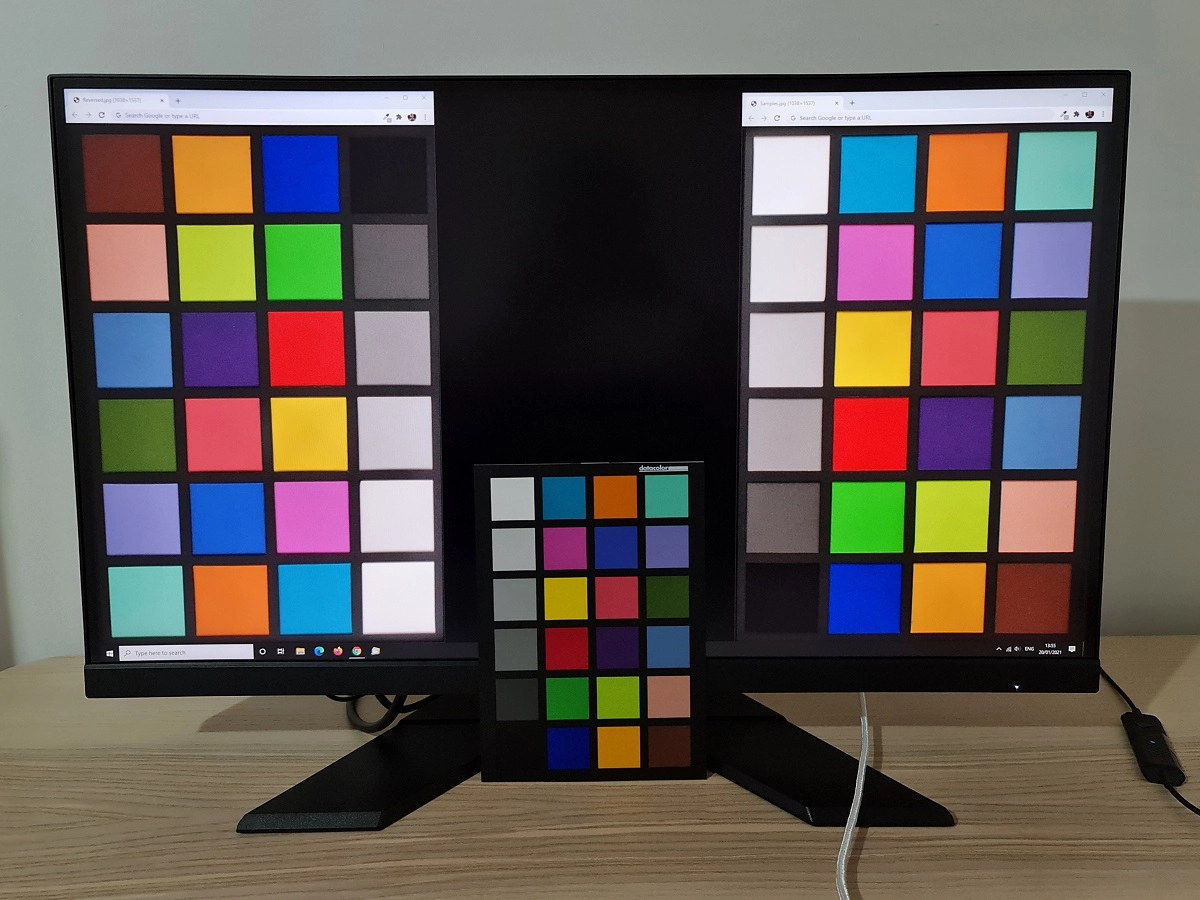
Saturation is now toned down significantly and many shades appear quite appropriate. The overdone greens and red pushes are toned down quite effectively, with the gamma tracking of our unit allowing a bit of extra depth to some shades. Some shades are a touch undersaturated now, including aquamarine (4) which now appears more of an aqua shade. Just bit paler than intended. Most other shades are well-represented and the strong colour consistency is again in play when comparing a given shade at a different position on the screen. Save for some uniformity-related issues on our sample for that pesky light chocolate brown shade. As usual, we’d recommend profiling the monitor with your own colorimeter or alternative calibrator using the native gamut if you require the highest level of colour accuracy.
Viewing angles
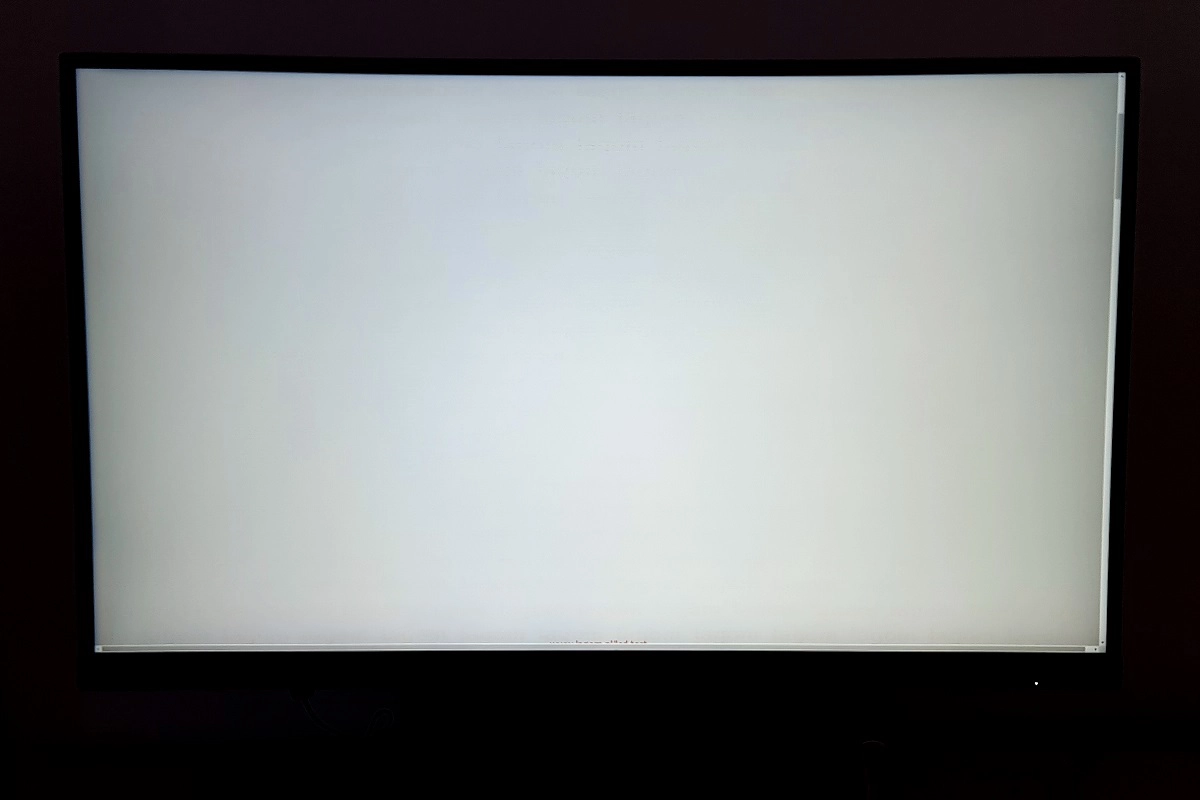
The video below shows the Lagom text test, a mixed desktop background, game scene and dark desktop background from a variety of viewing angles. The medium-light grey background of the Lagom text shows a more pronounced shift in colour temperature than you’d see on some IPS-type panels, becoming noticeably warmer as viewing angle increases. This may have accentuated by some uniformity issues on our unit. You can see some shifts in contrast and colour for the mixed desktop background and game scene. These shifts are somewhat more pronounced horizontally than on some IPS models, with more ‘hazing’ or perceived contrast loss at moderate to steep angles. But the shifts in colour from less extreme viewing angles aren’t as pronounced as you’d see on TN or VA models. The dark desktop background highlights ‘IPS glow’, which creates an obvious ‘bloom’ as viewing angles become steeper. The tone of the glow shifts with angle, but is generally warm and sometimes has a slightly orange or golden-green quality to it.
Interlace pattern artifacts
Responsiveness
Input lag
Perceived blur (pursuit photography)
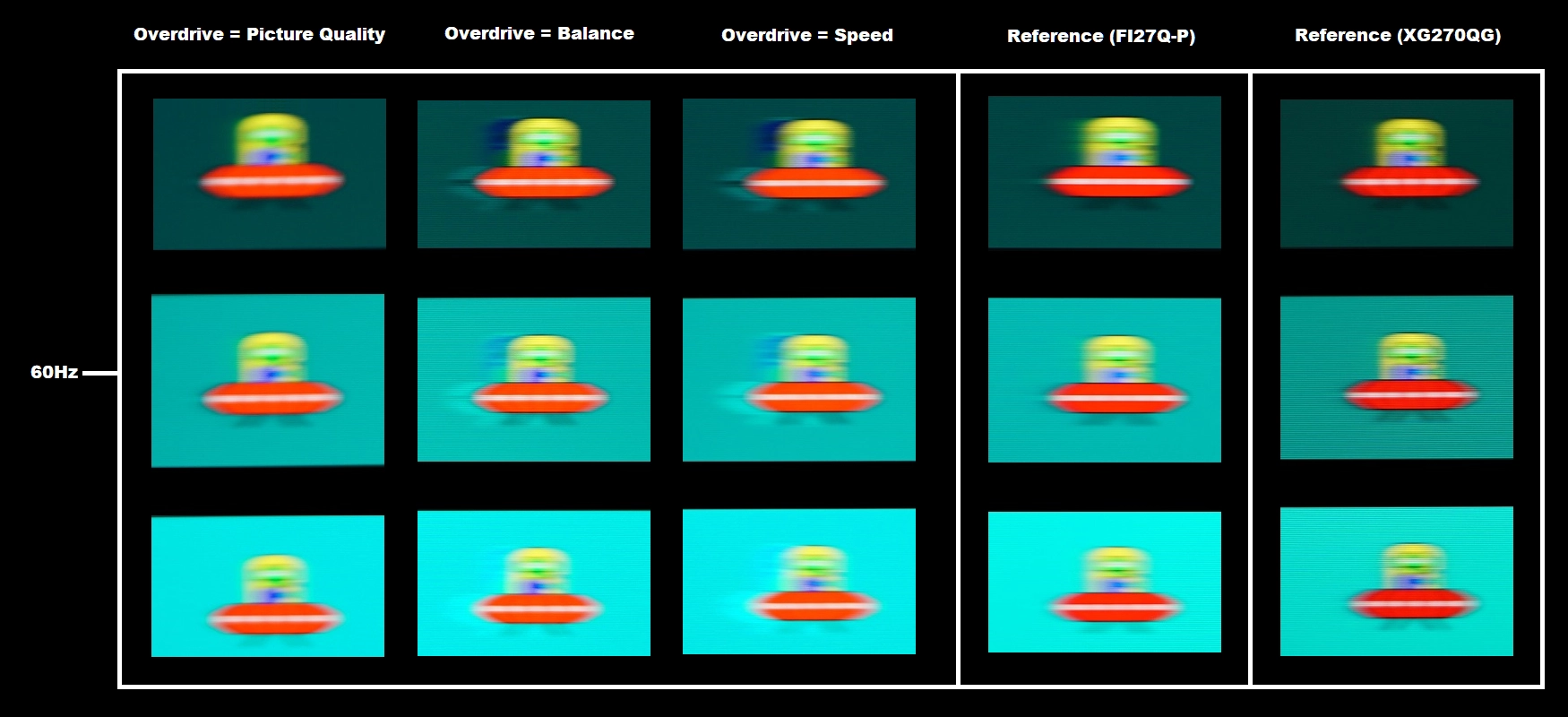

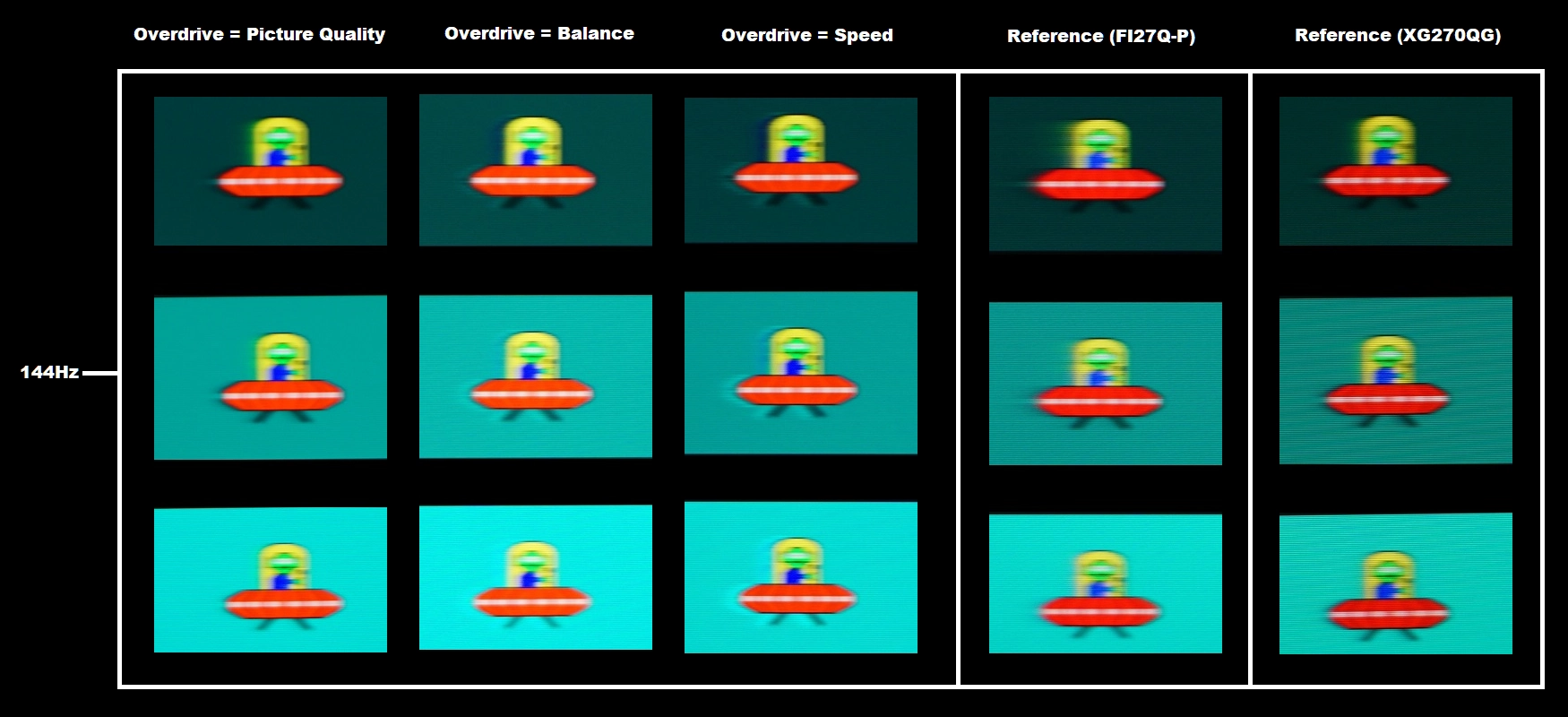
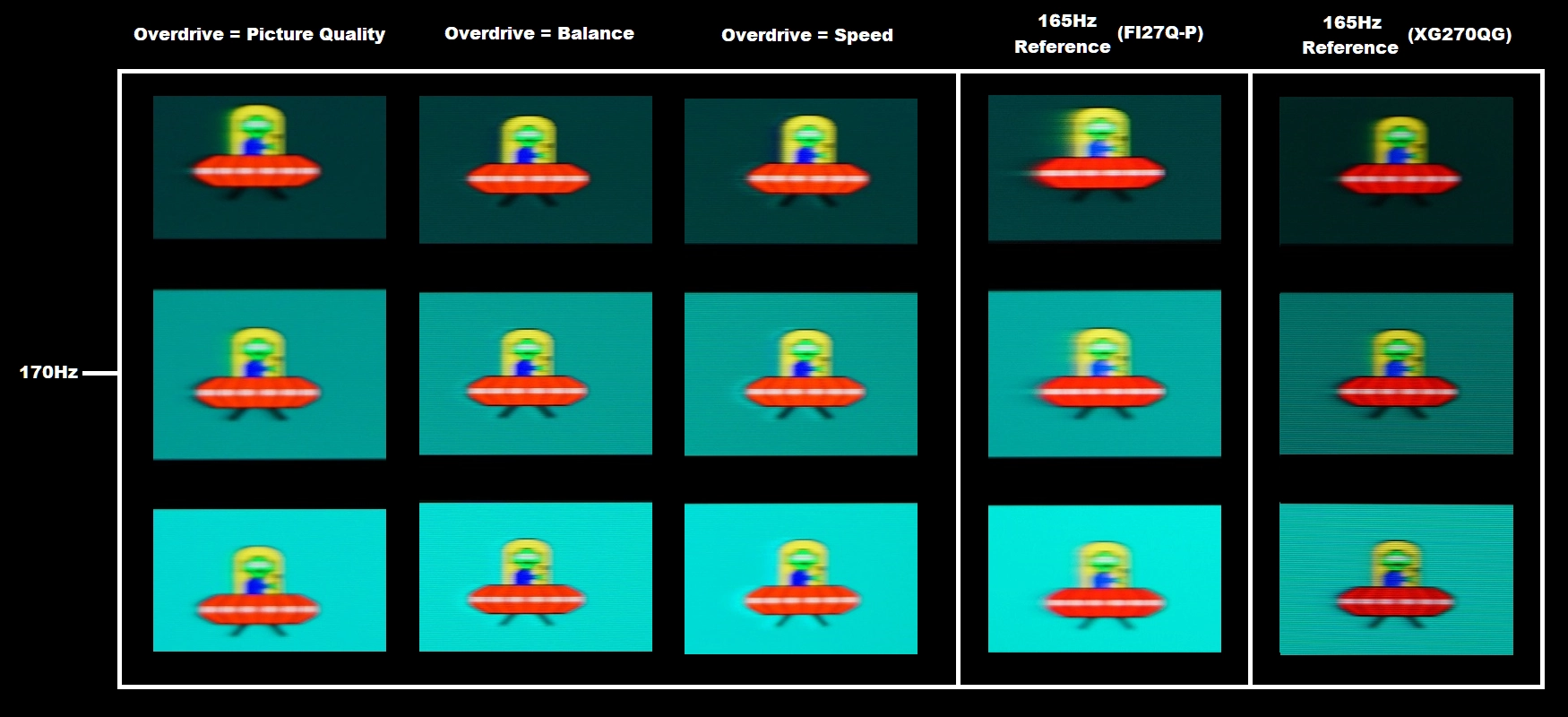
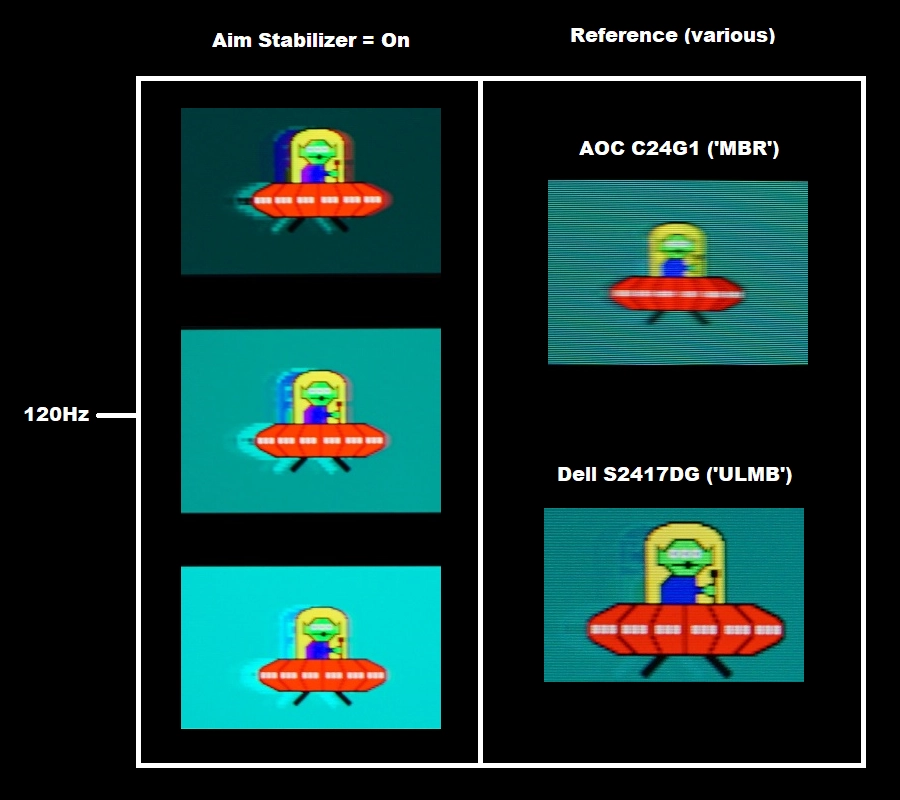
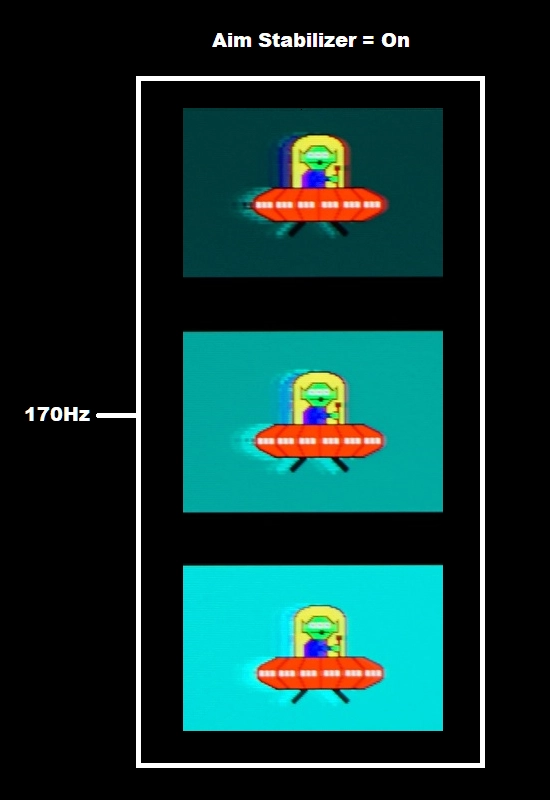

Responsiveness in games and movies

Aim Stabilizer
VRR (Variable Refresh Rate) technology
FreeSync – the technology and activating it
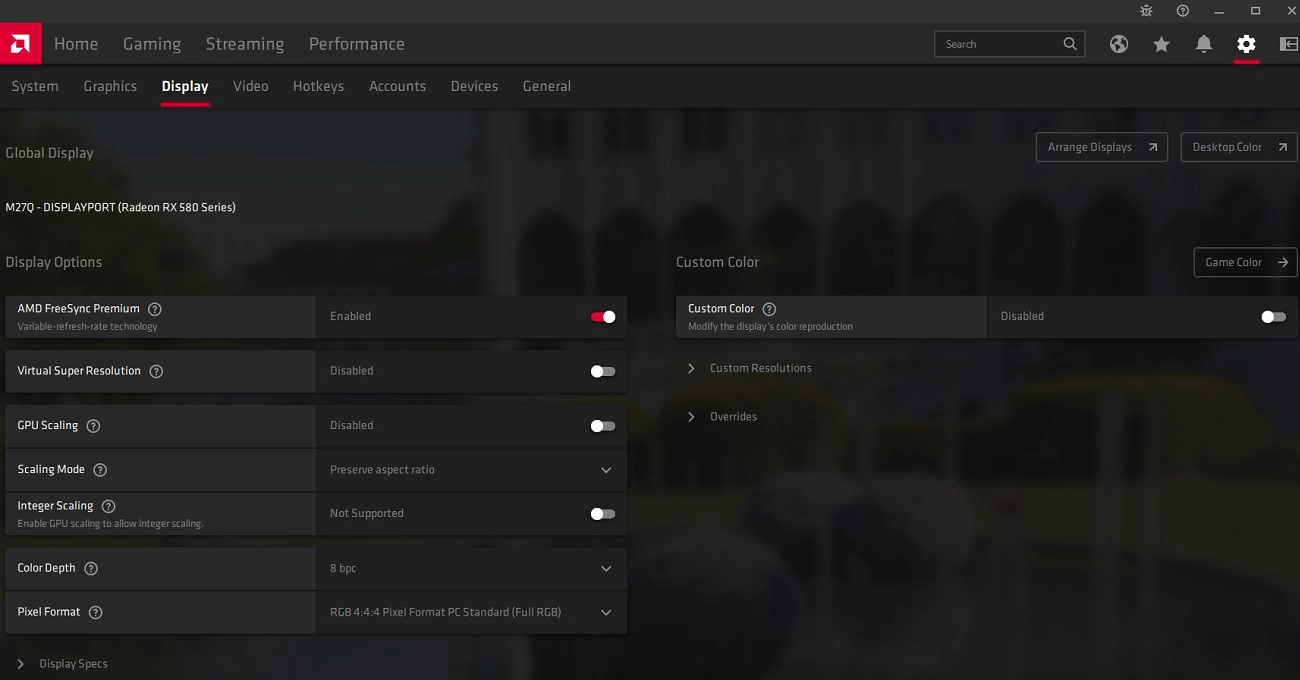
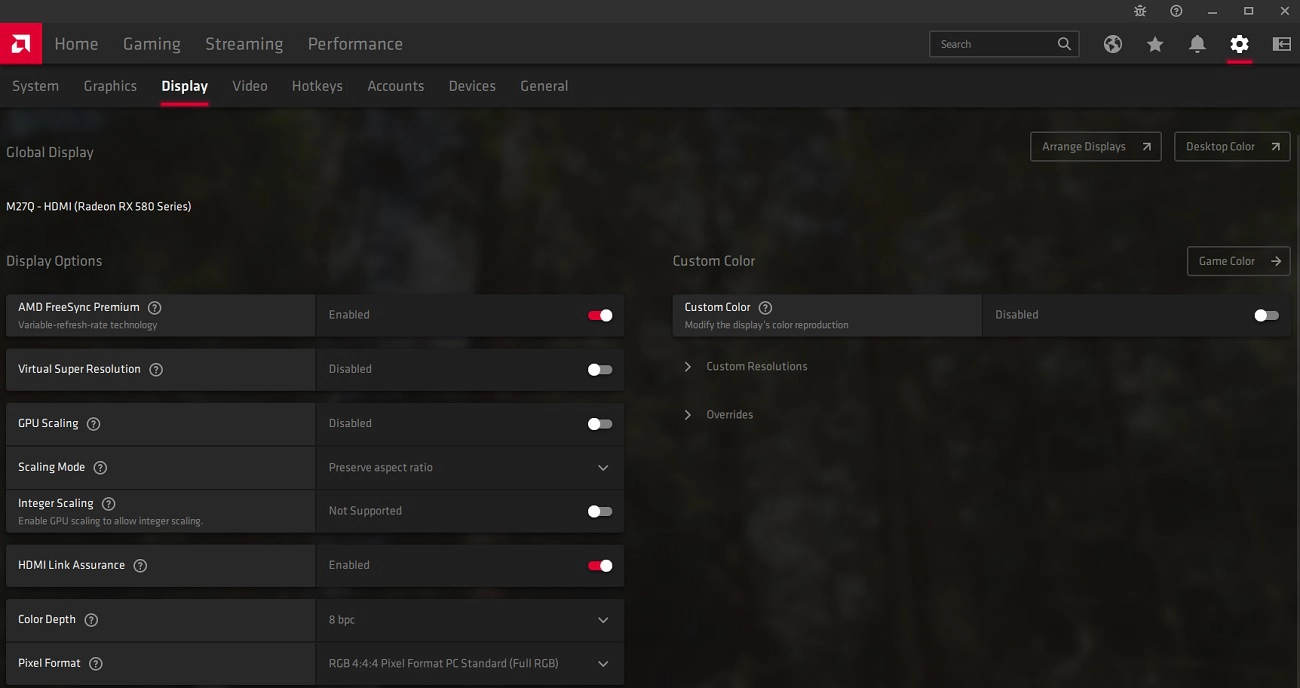
The Gigabyte supports a variable refresh rate range of 48 – 170Hz (144Hz max via HDMI). That means that if the game is running between 48fps and 170fps, the monitor will adjust its refresh rate to match. When the frame rate rises above 170fps, the monitor will stay at 170Hz and the GPU will respect your selection of ‘VSync on’ or ‘VSync off’ in the graphics driver. With ‘VSync on’ the frame rate will not be allowed to rise above 170fps, at which point VSync activates and imposes the usual associated latency penalty. With ‘VSync off’ the frame rate is free to climb as high as the GPU will output (potentially >170fps). AMD LFC (Low Framerate Compensation) is also supported by this model, which means that the refresh rate will stick to multiples of the frame rate where it falls below the 48Hz (48fps) floor of operation for FreeSync. If a game ran at 36fps, for example, the refresh rate would be 72Hz to help keep tearing and stuttering at bay. LFC sometimes seemed to activate at slightly higher refresh rates, closer to 52Hz (52fps), but this makes little difference in practice. This feature is used regardless of VSync setting, so it’s only above the ceiling of operation where the VSync setting makes a difference.
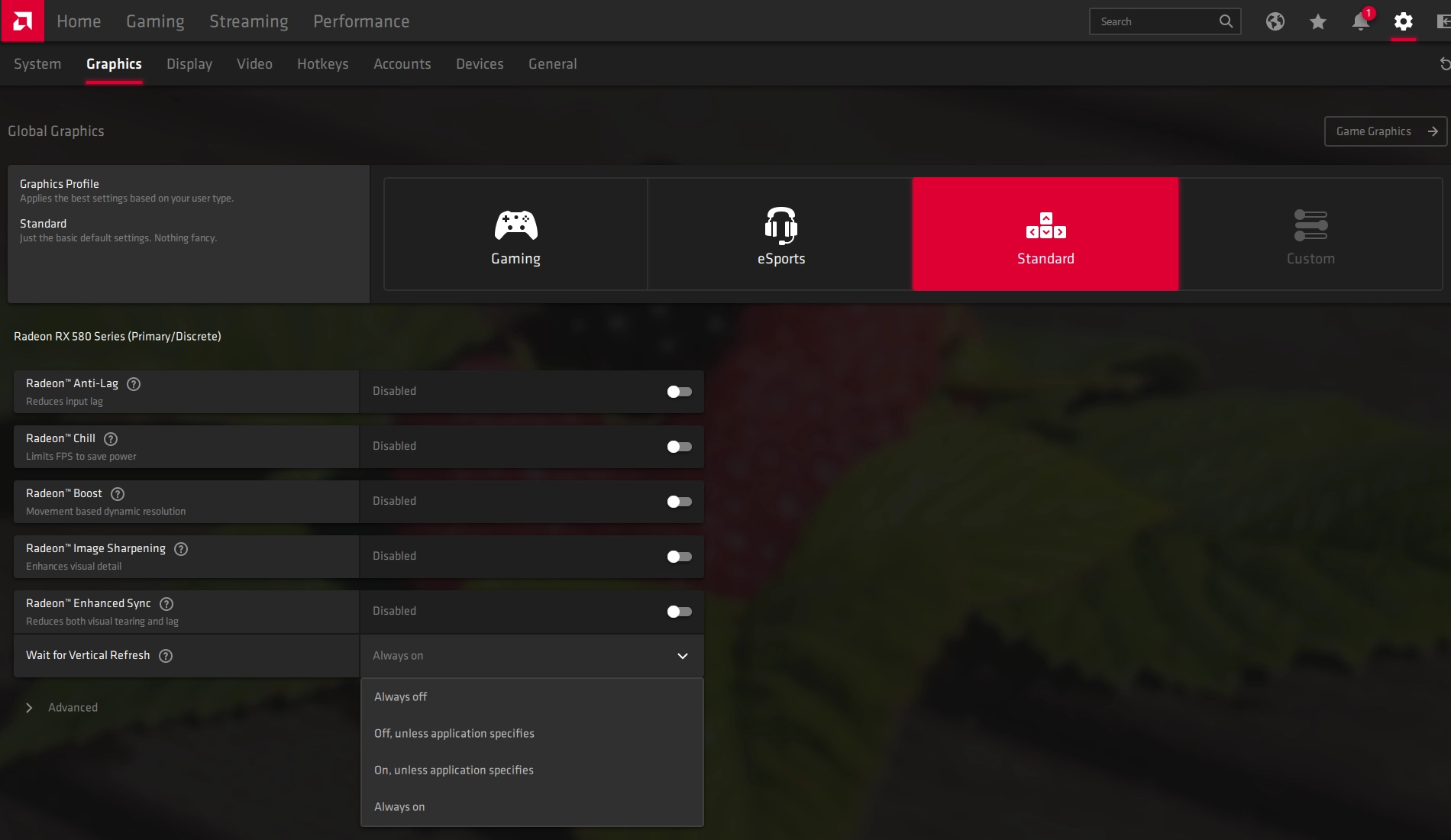
Some users prefer to leave VSync enabled but use a frame rate limiter set a few frames below the maximum supported (e.g. 167fps) instead, avoiding any VSync latency penalty at frame rates near the ceiling of operation or tearing from frame rates rising above the refresh rate. If you go to ‘Game Assist’ and activate the ‘Refresh Rate’ feature, the monitor will display the refresh rate. This will coincide with the frame rate of the content if the monitor is within the main VRR window. The counter reacts very rapidly to changes in frame rate. Finally, it’s worth noting that FreeSync only removes stuttering or juddering related to mismatches between frame rate and refresh rate. It can’t compensate for other interruptions to smooth game play, for example network latency or insufficient system memory. Some game engines will also show stuttering (or ‘hitching’) for various other reasons which won’t be eliminated by the technology.
FreeSync – the experience
Nvidia Adaptive-Sync (‘G-SYNC Compatible’)
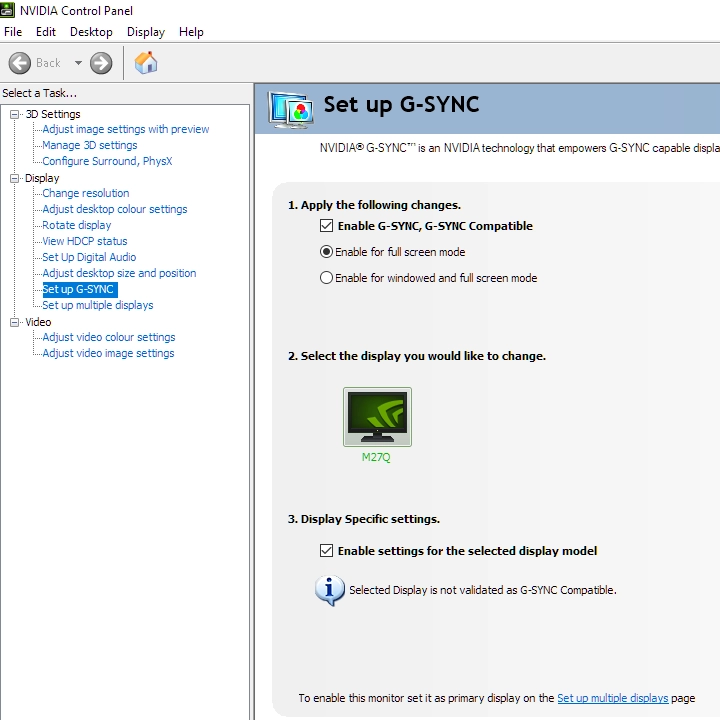
You will also see in the image above that it states: “Selected Display is not validated as G-SYNC Compatible.” This means Nvidia hasn’t specifically tested and validated the display. On our RTX 3090, the experience was very similar to what we described with FreeSync. The floor of operation for VRR was slightly higher and depended on the static refresh rate selected for the monitor. At 170Hz and 165Hz, the floor was 55Hz. At 144Hz it was 53Hz and at 120Hz it was 50Hz. We observed the same LFC-like frame to refresh multiplication technology below this, keeping tearing and stuttering from frame and refresh rate mismatches at bay. There was again a momentary stuttering as the boundary was crossed, much as we observed with our AMD GPU.
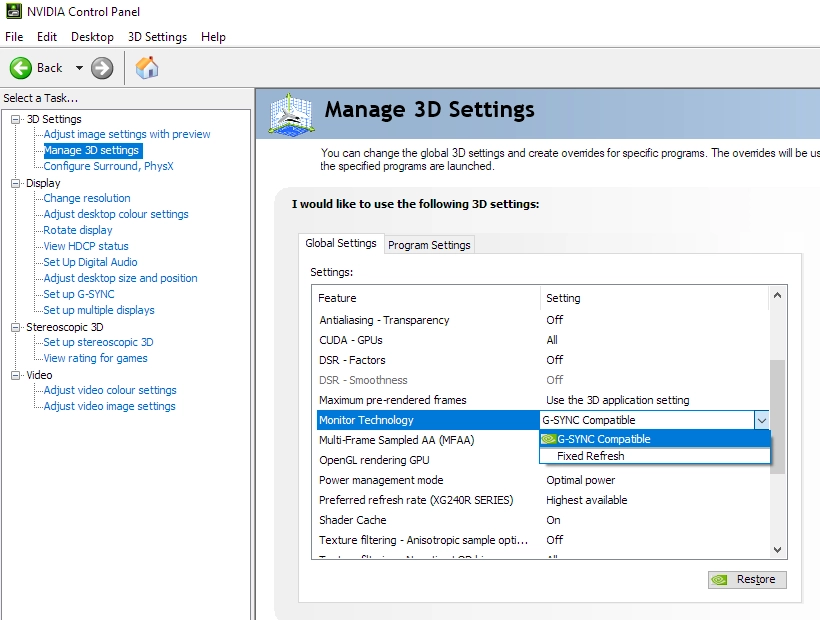
Finally, remember that you can use the ‘Refresh Rate’ feature in the ‘Game Assist’ section of the OSD to display the current refresh rate of the monitor. This will reflect the frame rate if it’s within the main variable refresh rate window. The polling rate (update frequency) is very high for this so it can be difficult to read exact frame rate at times, but it will still give an indication of the frame rate and the fact the technology is working. And as with AMD FreeSync, HDR can be used at the same time as ‘G-SYNC Compatible Mode’.
HDR (High Dynamic Range)
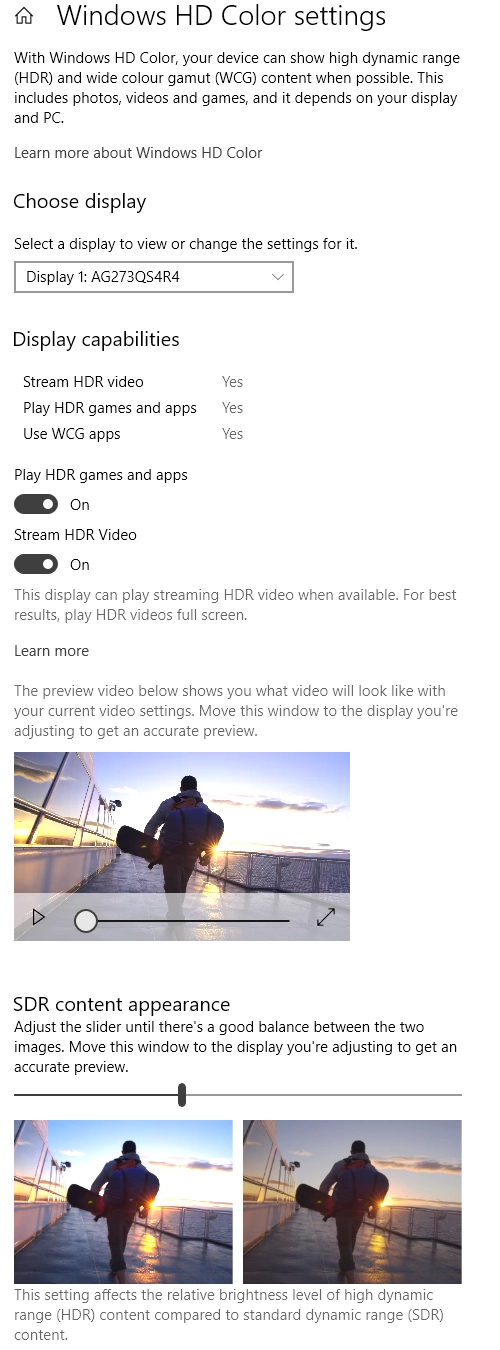

Colour gamut 'Test Settings'
The HDR10 pipeline makes use of 10-bits per colour channel, which the monitor supports via 8-bit + FRC. At some refresh rates (144Hz+ for DP, 120Hz+ for HDMI) the dithering stage is offloaded to the GPU at the native resolution, for bandwidth reasons. We’ve carefully observed a range of content (including fine gradients) on a broad range of monitors where 10-bit is supported monitor side (usually 8-bit + FRC) and where the GPU handles the dithering under HDR. Including comparisons with a given model where the monitor handles the dithering at some refresh rates and the GPU handles it at others, due to bandwidth limitations. Regardless of the method used to achieve the ’10-bit’ colour signal, we find the result very similar. Some subtle differences may be noticed during careful side by side comparison of very specific content, but things are really handled very well even if GPU dithering is used. This enhanced precision offered by the 10-bit signal enhances the nuanced shade variety. With a superior range of very closely matching dark shades, shadow detailing is lifted out in a natural way. This uplift in detail is very different to what a gamma enhancement would achieve under SDR as that simply gives a ‘flooded’ or unnatural appearance. The greater variety of closely matching bright shades, meanwhile, creates a more natural look to various elements such as smoke effects, areas of sky and weather effects. Smoother gradients with more natural progressions are observed here. The image below shows one of our favourite scenes under Shadow of the Tomb Raider for highlighting a strong HDR performance. Note that the photo is purely for illustrative purposes and in no way represents how the monitor appeared running HDR in person.
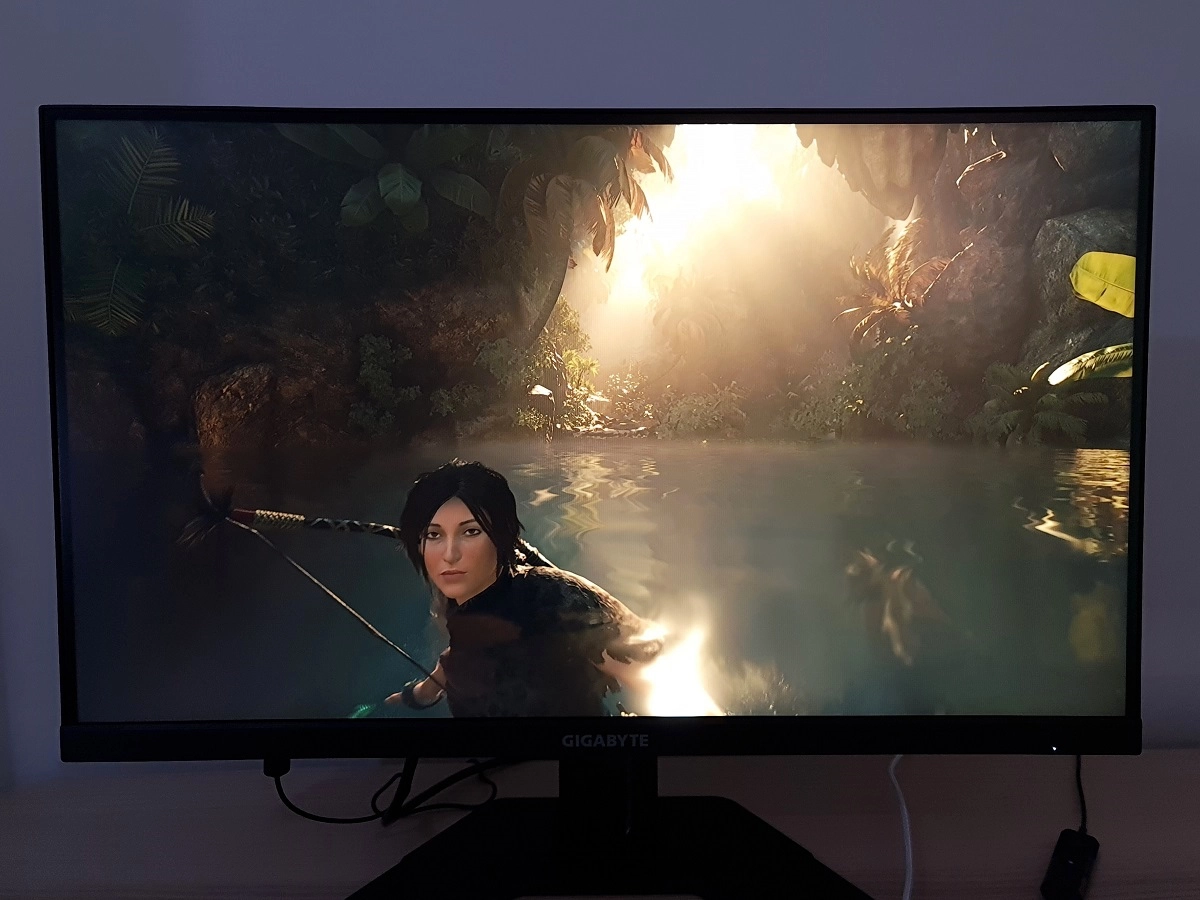
Interpolation and upscaling
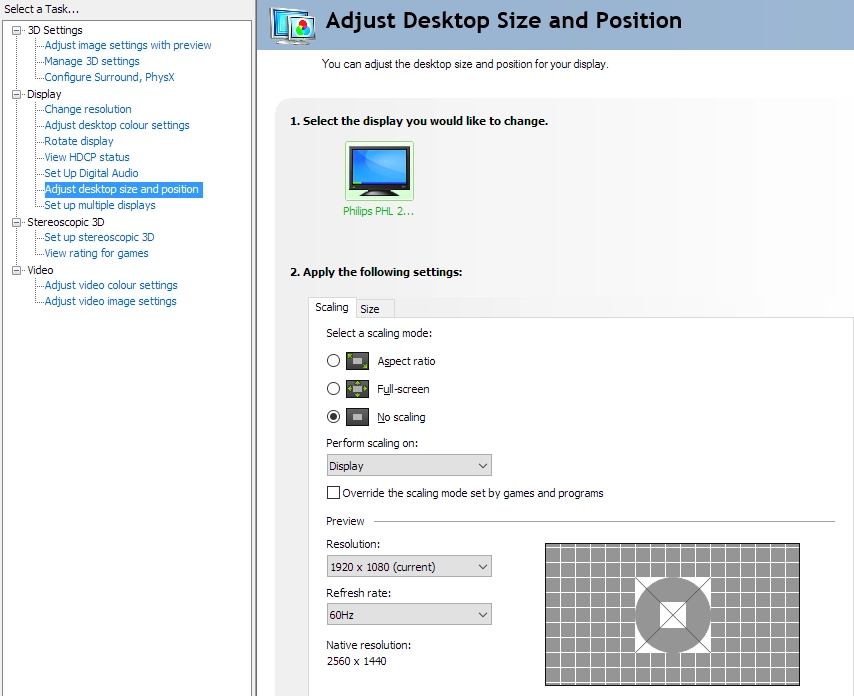
The monitor offers various ‘Display Mode’ settings in the ‘Gaming’ section of the OSD, as explored in the OSD video. A setting that will be of particular interest to some is the ‘1:1’ pixel mapping feature, only accessible if ‘AMD FreeSync Premium’ is disabled in the OSD. The monitor will only use the pixels called for in the source resolution to display the image, with a black border around the image using the remaining pixels. The default ‘Full’ setting instead uses interpolation to map the source resolution onto the 2560 x 1440 pixels of the display. The ‘Aspect’ setting does the same but will respect the aspect ratio of the source resolution so that it doesn’t stretch things. This will require a black border in some cases. When running at 1920 x 1080 (Full HD), the monitor presented the image that was a fair bit softer than viewing a native Full HD screen of the size. We found setting ‘Super Resolution’ to ‘1’ presented a more pleasing image. Whilst it didn’t look quite the same as a native Full HD resolution would, it offset the excessive softening quite nicely and provided a fairly crisp and detailed look overall. You can alter this and also the ‘Sharpness’ setting to help fine-tune to your own preferences, which is a good flexibility to have. With the overall image presentation and flexibility in mind, we consider this a relatively strong interpolation performance.
Video review
Timestamps:
Features & Aesthetics
Contrast
Colour reproduction
HDR (High Dynamic Range)
Responsiveness (General)
Responsiveness (Adaptive-Sync)
Conclusion
Positives Negatives Vibrant and varied colour output with strong consistency and good coverage of both the DCI-P3 and Adobe RGB colour spaces
Gamma tracking not quite at ‘2.2’ target on our unit, some potential ‘fringing’ issues related to subpixels Decent static contrast for panel type, light to very light screen surface with fairly smooth surface texture keeps image free from a grainy or layered appearance Moderate ‘IPS glow’ ate away at detail and atmosphere, especially in dimmer room lighting. HDR performance very limited from contrast perspective A competent 170Hz performance with well-tuned pixel responses throughout the VRR range. Adaptive-Sync worked well on both AMD and Nvidia GPUs Some minor weaknesses in pixel responsiveness, strobe backlight implementation of limited appeal due to overshoot and other visual disturbances A good resolution and comfortable pixel density for work and play, a comprehensive OSD with accompanying software and height-adjustable stand Basic overall design, particularly when considering the stand base. No swivel or pivot with included stand


